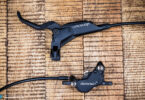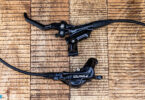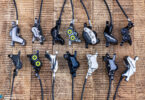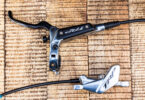In our big 2024 trail bike group test, we crowned an unexpected winner, had a few pleasant surprises and also spotted a few lemons, which we would never recommend you buy! Our test field includes 15 of the most exciting trail bikes of the season – but what does it take to be the best and worst trail bike of the year?
Table of content: What is in this test
- Our test field
- What is a trail bike and what should it be capable of ?
- How and where did we test the Light-eMTBs?
- The ENDURO test crew
- Our test criteria
- The tops and flops in our 2024 trail bike group test
- Which is the best trail bike of 2024?
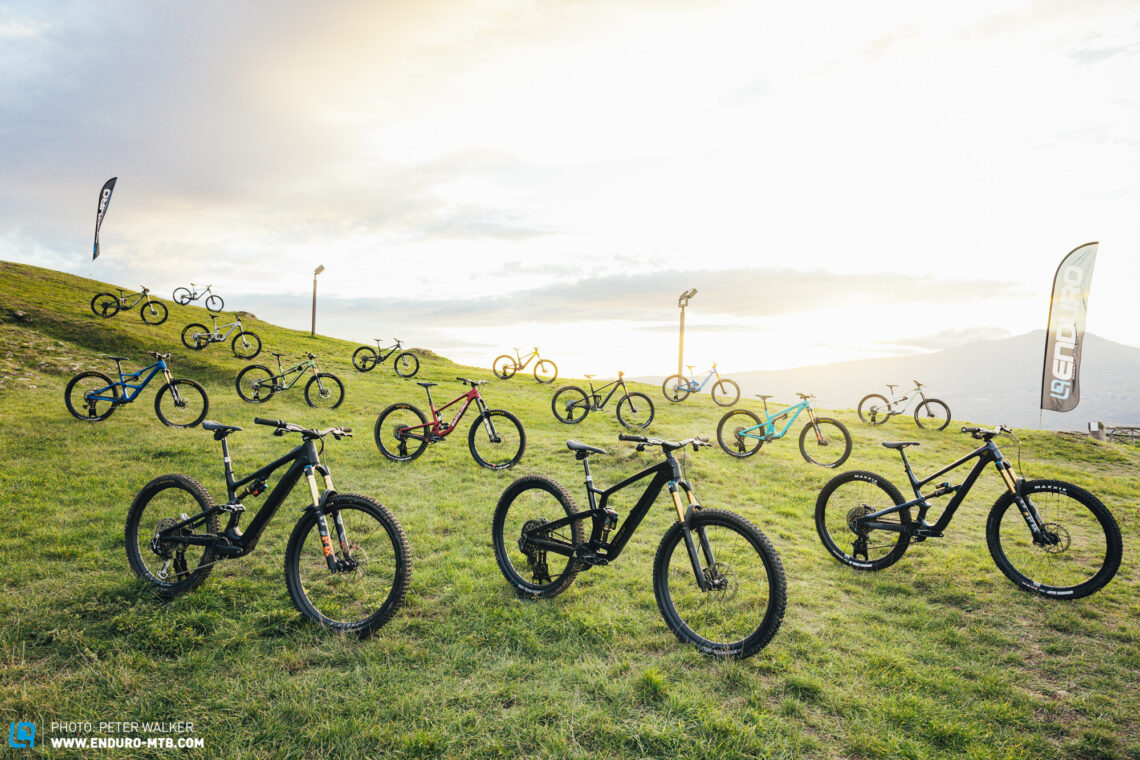
Let’s be honest, most of us are totally over-biked! We spend most of our time tackling tame home trails with big-hitting bruisers, just to be able to enjoy the extra travel on the occasional bike park trip or rowdy enduro holiday in summer. But is it really necessary with all the fantastic technology available these days?
Back in our 2022 trail bike group test, we recognised a clear pattern that has also repeated itself in this year’s test: modern trail bikes are becoming increasingly capable, allowing you to tackle faster, rougher trails and bigger jumps without smashing your bike (and yourself) into a million pieces. And no, modern trail bikes don’t pedal like shit. Quite the opposite: they don’t call for compromises uphill, and aren’t necessarily stupidly expensive either. Sounds too good to be true?
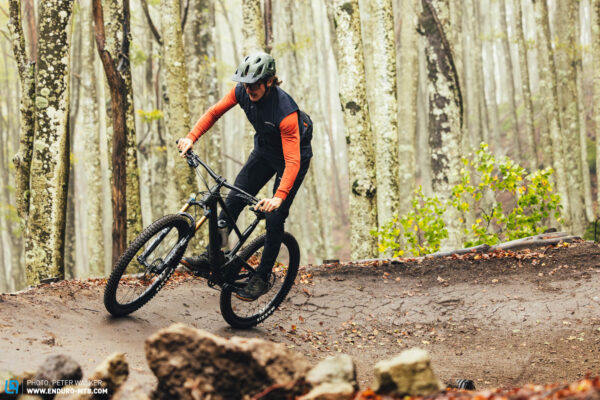

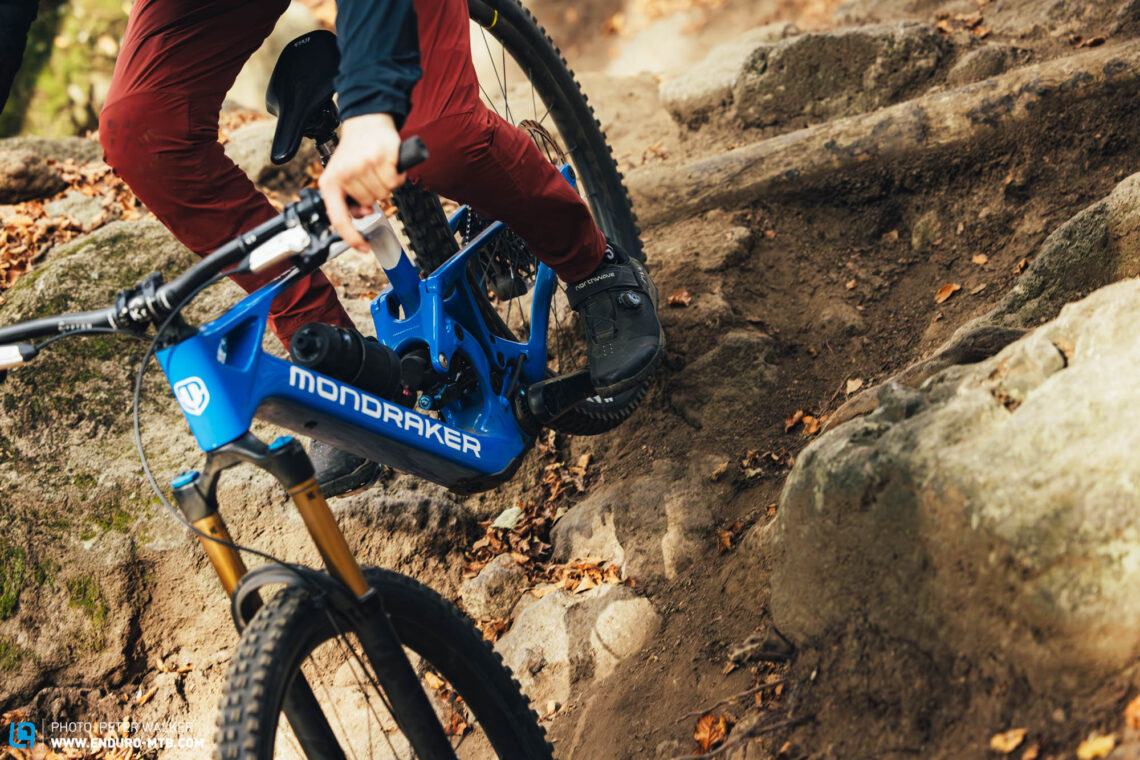
Trail Bike ≠ Trail Bike
First off, the days when we were buying bikes based on a predefined category are long gone. In other words, instead of fixating on a certain bike category, you should look for a specific bike model, regardless of whether it’s classified as an all-mountain, super enduro or full-suspension touring bike. There’s no such thing as “one bike for all”. Every manufacturer interprets the existing categories in a different way, relying on different specs, features and key data and keeping the focus on different things, blurring the boundaries between categories. What really counts is the overall concept and, of course, how well each concept suits your individual needs, riding style and intended use.
What became quickly evident again in this year’s test with 15 trail bikes, is that each model has its very own character, with huge differences distinguishing the bikes from one another. In other words, depending on the bike, you could either carve through a berm with extreme precision or slide through it hoping for the best – and that’s despite the fact many bikes share near-identical key data like the suspension travel, geometry and wheel size.
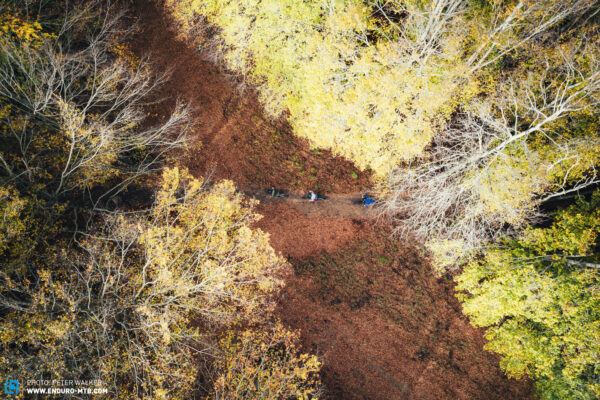

Have you ever seen Chat GPT flying down the trails?
However, there’s one thing all trail bikes have in common: they’re all designed to deliver top riding fun on the trail – or at least, they should! That’s mainly down to the fact that trail bikes are not developed for racing, which is the case with most enduro and XC rigs. Instead, they’re designed to be versatile, strong all-rounders that allow you to have fun on any sort of trail, whether you’re heading to your local forest for a chilled post-work ride without knee pads, shredding gnarly bike park lines at the weekend, or embarking on an epic singletrack expedition in the Alps. The best trail bikes in this group test can do all of this, and they do it extremely well! To achieve this, they must be able to combine different riding characteristics, and sometimes even to unite supposed opposites. For example, a trail bike has to perform equally well on climbs and descents, which can be achieved through a sensible geometry, finely tuned rear suspension kinematics and the right choice of components. It’s a fine balance, a harmonious interaction of different criteria that can’t be deduced from a spec list, geometry chart or random lab results – let alone predicted by AI. Or have you ever seen Chat GPT rocketing down the trail?
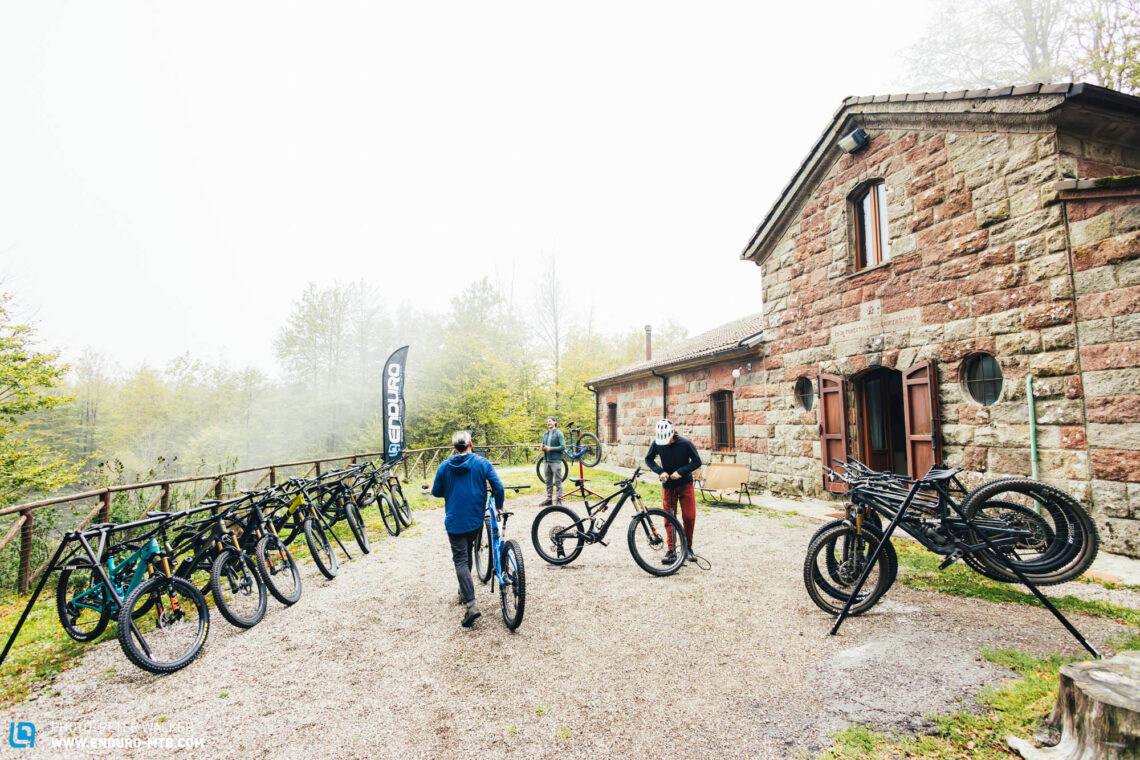
Our test field: 15 of the most exciting bikes of 2024 at a glance
Our test field consists of 15 modern trail bikes and includes all kinds of different concepts, from lively, lightweight speedsters to rowdy shredding machines and even several light eMTBs, which pushed their analogue competitors to the limits. It was a colourful bunch of contestants, with newcomers, underdogs, innovative high-tech trail bikes and bikes that have already set a benchmark in the past seeking to prove themselves against the new competition.
Our latest readers’ survey with 23,000 participants revealed which brands are most popular amongst our readers and which technologies arouse their interest. This gave us a good starting point to work from. On top of that, our editorial team racked their brains to understand which bikes simply couldn’t be overlooked, along with a few more niche options that our readers might not be aware of.
On this basis, we’ve put together an exciting test field with 15 hot, new bikes, which provided some exciting insights and plenty of interesting facts. For example, there’s a difference of over € 8,000 between the cheapest and most expensive competitors. Is this bonkers? Or is it unfair? Not at all, in fact, our test shows that the opposite is true! Curiously, there are bikes with nearly identical specs that have a price difference of over € 4,000, which caused quite a stir – wtf!
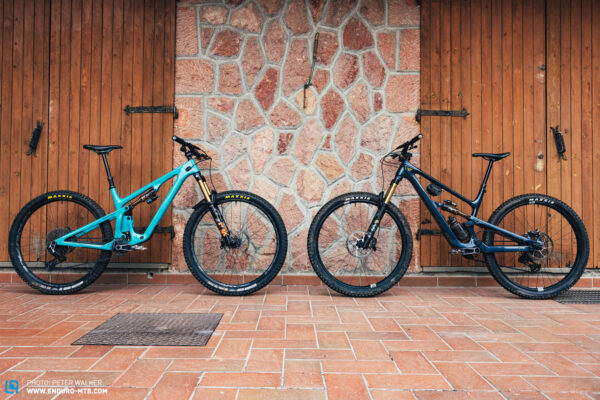
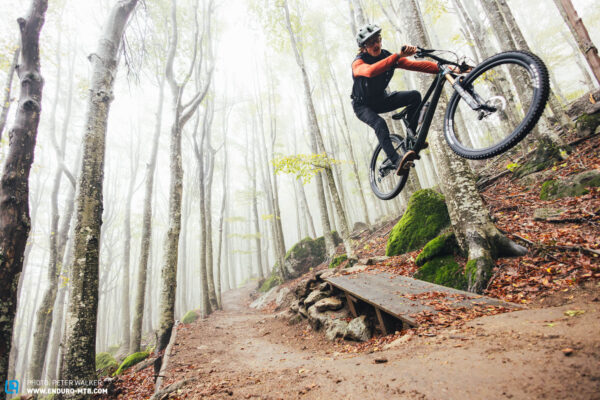
While most of the test field consists of analogue bikes, we also included four of the most important light eMTBs of the season, which rely on the four most exciting motor systems and battery concepts currently available on the market, thus appealing to a very wide range of rider types. This also explains the huge 7.5 kg weight difference between the lightest and heaviest competitors – that’s a whole road bike worth of difference! Are the heaviest bikes necessarily the slowest or most boring? Let us surprise you! There are also huge differences in terms of suspension travel, with the most conservative rear suspension generating 120 mm of travel at the rear, the most capable bike delivering a whopping 155 mm. Maybe that doesn’t sound like a fair comparison, but which one was more fun downhill?
For a better overview, here’s a list of all 15 bikes in our 2024 trail bike comparison test, with some of the most important data.
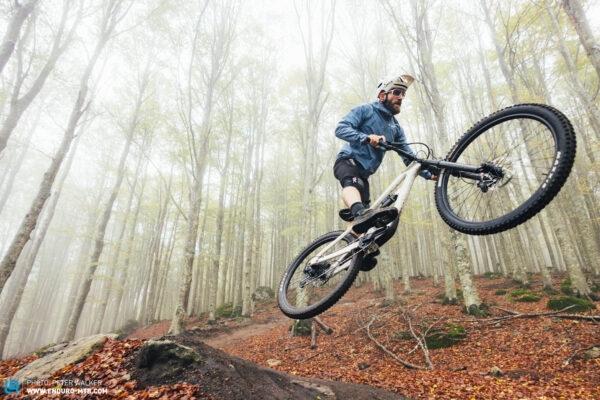
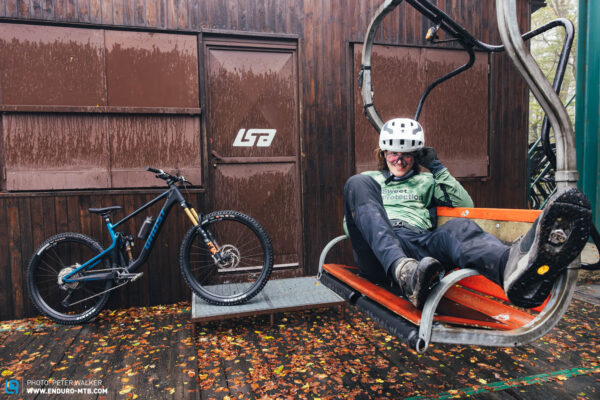
The Cannondale Habit LT 1 1 takes on the competition with a humble spec, renouncing any kind of fancy, shiny components. Together with the YT, it wants to prove that even the cheapest bike in this test can put a big grin on your face on the trail. The CUBE Stereo ONE55 C:62 SLT 29, on the other hand, comes with a top-tier spec at an affordable price. At first glance, it stands out from the crowd with some radical details: at 13.4 kg, for example, it’s the lightest bike in this test (alongside the SCOR), and at the same time, it’s the bike with the most travel, which is controlled by a very capable FOX X2 shock. Does this make it the most potent contestant downhill?
Just with its name, the GHOST RIOT Trail Full Party shows its intentions. With a fully integrated EightPins dropper and tire inserts fitted as standard, the GHOST has a few party tricks up its sleeve. But is it enough to claim victory in our 2024 trail bike group test? Other bikes, like the MERIDA ONE-FORTY 10K, have plenty of tricks up their sleeves too. With the ONE-FORTY, the Taiwanese manufacturer introduces a versatile frame platform with flex-stays that relies on a brand new design language and innovative geometry concept.
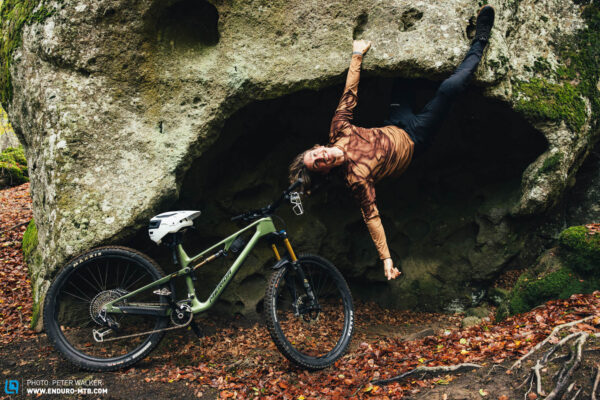

As already mentioned, we didn’t miss the opportunity to include a few light eMTBs in our 2024 trail bike group test, deliberately ignoring all the hate they attract. And once again, they proved that they have a right to be in this test field. Let’s start with the sleek Mondraker Neat RR SL and its TQ_HPR50 motor system, which delivers a very natural ride feeling but also feels weak compared to the competition. In purely visual terms, its electric nature only becomes evident upon closer inspection. It’s a whole different story with the NICOLAI SATURN 14 Swift HRZ, which is distinctly recognisable as an ebike, integrating a brand-new Bosch SX motor into a machined alloy frame. At 600 watts peak power, the motor packs a real punch when you pedal hard.
The Specialized S-Works Turbo Levo SL is the “ultimate trail bike” in the portfolio of the Californian manufacturer. After robbing its analogue counterpart of the title, there was no way that we wouldn’t include it in this test. Specialized spared no expense or effort, delivering tremendous development work with the sophisticated motor system of the Levo SL. What’s even more impressive is that the Levo SL is already in its second iteration, while most light eMTBs in this group test are still in their infancy. Does this give the Specialized an advantage?
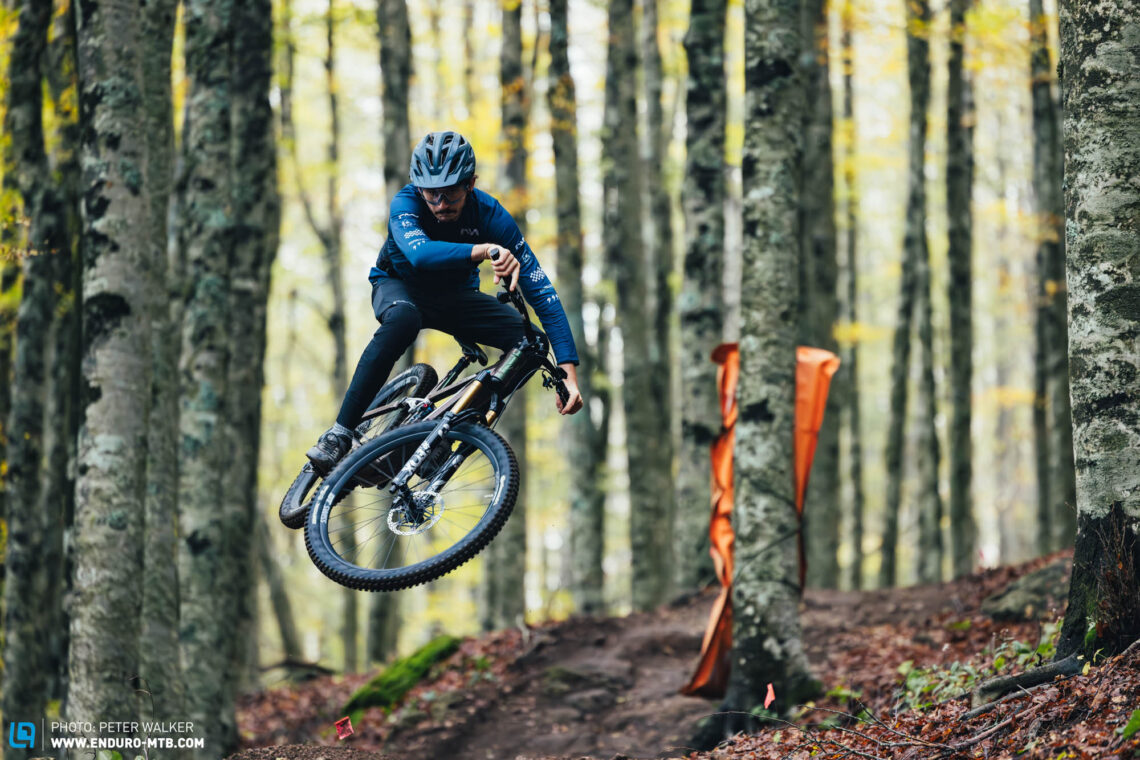
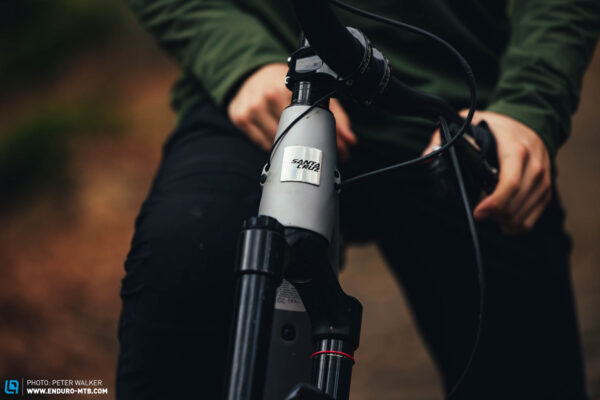
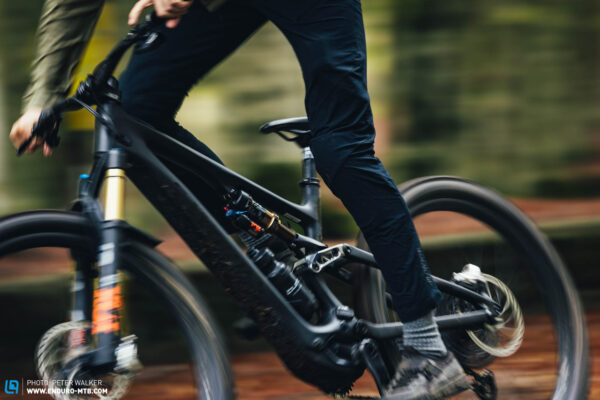
The Santa Cruz Heckler SL XX AXS RSV, too, is based on its analogue sibling, the Bronson. The FAZUA Ride 60 motor system is neatly integrated into the down tube, preserving the distinctive look of Santa Cruz’s VPP rear suspension. Like the Levo SL, it rolls on a mixed wheel setup with a small 27.5″ wheel at the rear, promising to be tons of fun on the trail, while packing a punch uphill. The Heckler can count on some family support, because the Californian brand also entered the race with one of their analogue trail bruisers, the Santa Cruz Hightower X0 AXS RSV, which looks a lot like the Heckler despite rolling on two big 29″ wheels.
Introduced only recently, the Orbea Occam LT M10 employs a versatile frame platform and allows you to customise both the spec and look of your bike down to the smallest detail using Orbea’s extensive online configurator. Does this make it the perfect trail bike for everyone? Well, there’s another bike in this test that lets you do pretty much the same, at least in terms of aesthetics. With the brand-new SCOR 2030 X01, you can design your very own frame protectors for the top and down tube using the Swiss brand’s online design tool. With only 120 mm of rear travel, it doesn’t have lots of reserves on paper, but the progressive suspension allows you to get rowdy downhill while maintaining a lively, nimble character on the climbs.
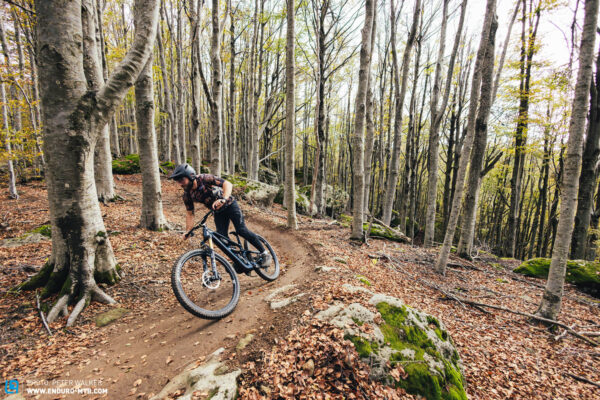

With the SCOTT Genius ST 900 Tuned, the Swiss manufacturer shows once again what seamless integration looks like, concealing the shock inside the frame and routing all cables internally. To round off the clean look, SCOTT also throw in a fancy one-piece handlebar/stem unit.While the high level of integration ensures a super tidy look, it also has its drawbacks, making it harder for home mechanics to work on their bike. Is the Genius ST 900 Tuned just as discreet on the trail as it looks? The Trek Fuel EX 9.9 X0 AXS T-Type is the latest evolutionary development of a true trail classic, the latest version of a bike which has been a regular in our group tests over the years. Particularly striking are the top-tier spec and countless customisation options, which allow you to alter both the geometry and kinematics of the bike. Can our trail veteran use its lengthy experience to secure Best in Test in our 2024 trail bike group test?
With its big brother securing victory in last year’s enduro group test, the YETI SB140 LR T3 X0 has big shoes to fill. It shares the same frame features and Switch Infinity suspension design as the enduro model, and (of course) comes in the same iconic turquoise finish. The spec is almost identical to the last contestant in this test, the new YT JEFFSY CORE 5 CF, which is packed with practical features. However, the German direct-to-consumer brand charges significantly less than its competitors for the fancy components – but is YT skimping elsewhere?
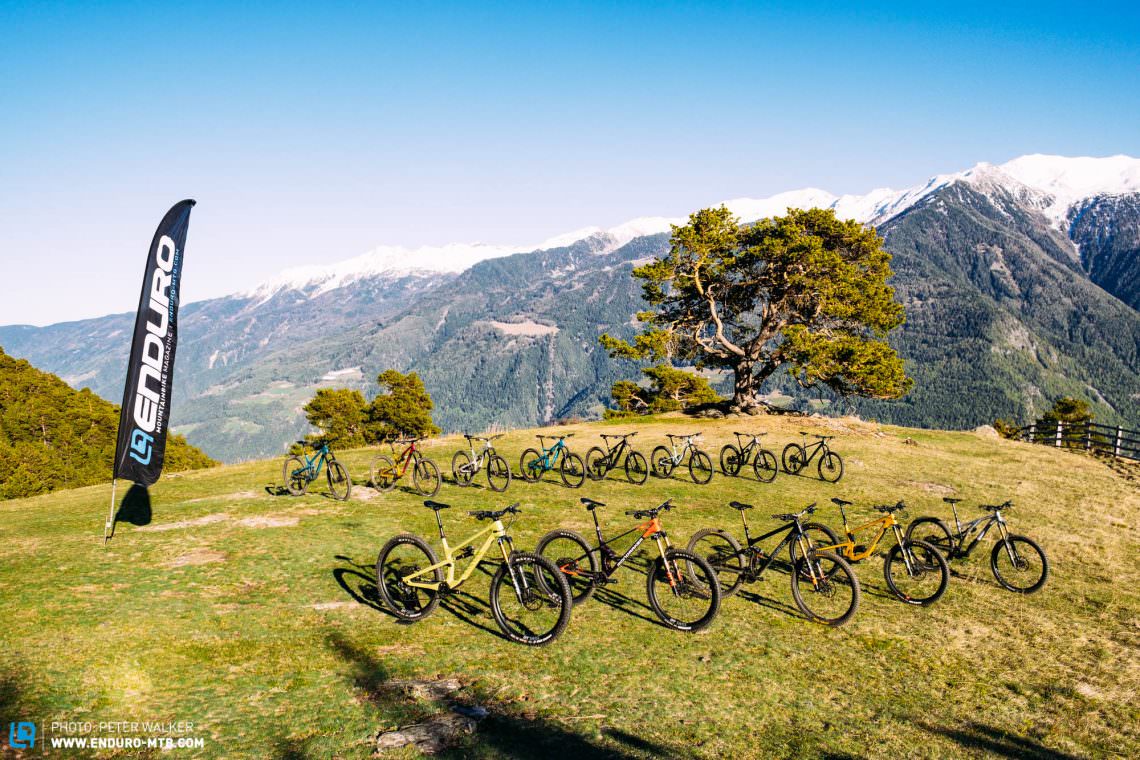
Of course, there are some bikes missing this year, and as much as we’d love to squeeze all of the trail bikes currently available on the market into one massive group test, this would simply be impossible. Many bikes, like the Propain Hugene, Specialized Stumpjumper, Canyon Spectral and Santa Cruz Bronson haven’t been updated since our last group test, and weren’t able to secure victory back then anyway. That’s why they didn’t even enter the competition this year, but you can still draw some interesting conclusions by reading last year’s reviews and comparing the bikes.
On the other hand, we would have loved to include some other bikes in this test, like the Canyon Neuron, Forbidden Druid and COMMENCAL TEMPO, but the manufacturers were either unable to deliver a bike in time, or simply too afraid to hear our opinion, so they decided not to send a bike for this test. Once again this year, there are bikes that didn’t live up to expectations, but more on this later.
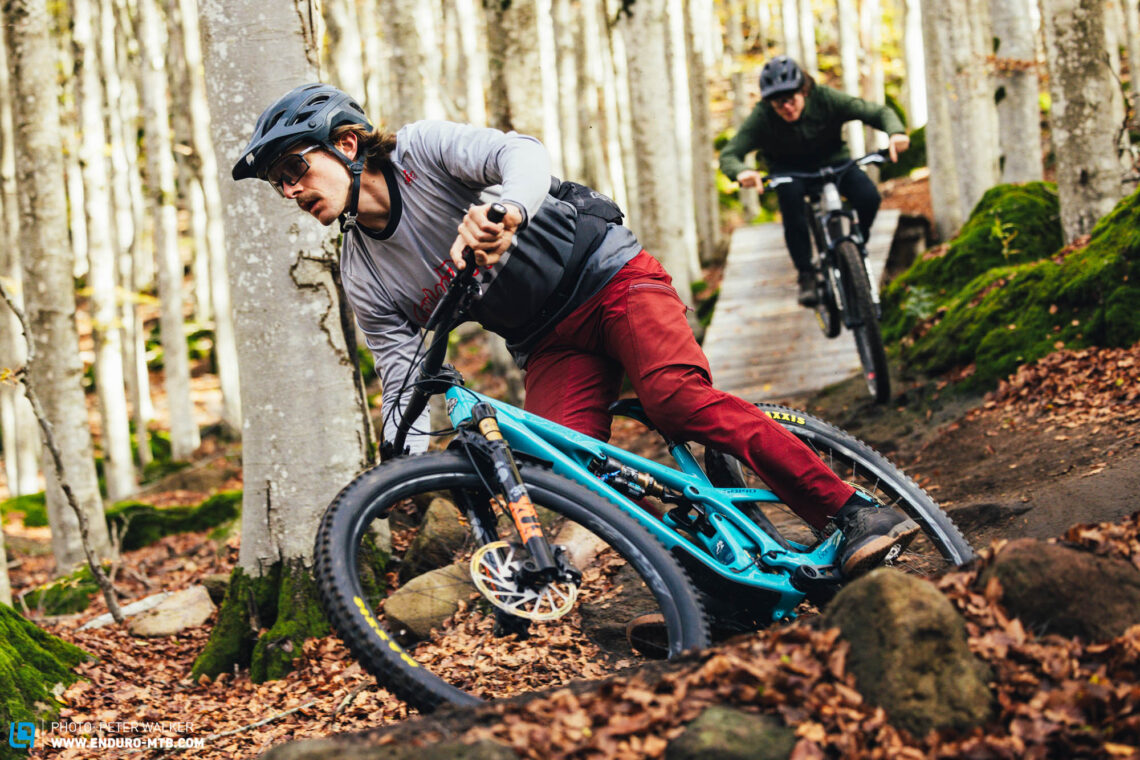
What is a trail bike and what should it be capable of ?
A good trail bike not only allows you to climb to the top of the mountain comfortably and without suffering too much, but also delivers tons of fun when shredding your way back down into the valley. Good composure and plenty of reserves are no longer exclusive to potent enduro bikes, with increasingly more trail bikes packing a punch on the trail.
Trail bikes are designed to be the perfect all-rounder and to deliver an unparalleled riding experience. Climbing performance isn’t compromised in any way – quite the opposite! Despite their impressive downhill potential, the trail bikes in this group test are surprisingly nimble, pedal-neutral and at the same time offer a high level of touring comfort. Furthermore, trail bikes aren’t subject to the limitations of racing, which is the case with many enduro and XC bikes. Instead, they’re designed to crank the fun factor up to eleven while inspiring huge amounts of confidence in the process, whatever trail you’re deciding to tackle. One of the most frequently asked questions amongst modern mountain bikers is whether your next rig should be an eMTB, which is partly due to the advent of the latest generation of light eMTBs. The advantages of light e-mountainbikes are obvious: ride more trails in less time, overcome laziness, and enjoy a wider range of applications, from rowdy trail expeditions to family weekends with a trailer and fun uphill sessions with your mates. Depending on which motor system you’re using, you’ll be able to engage in some wild climbing antics. The disadvantages? Higher prices, more wear and tear… but is the handling really worse?
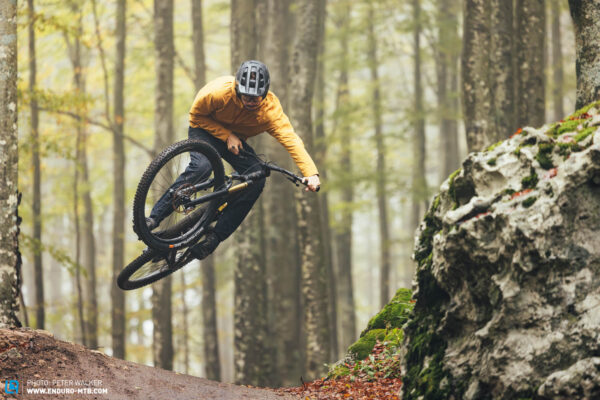
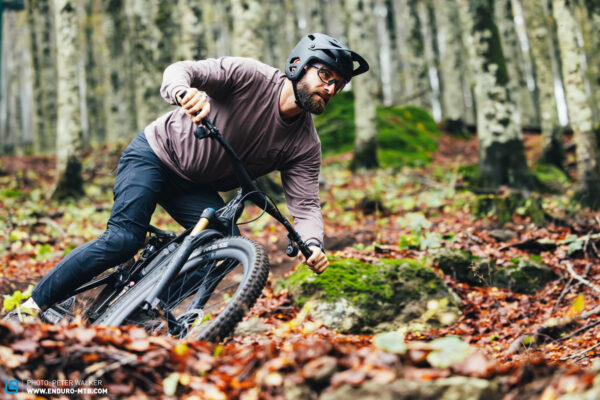
Do I even need a new trail bike?
If you’re asking yourself this question, you probably forgot about the N+1 rule, which states clearly that you can never own enough bikes. However, if for some inexplicable reason, you want to stick to just one bike, modern trail rigs are the optimal addition to your bike cave, because they’re extremely capable and at the same time have great touring potential, thus covering an incredibly wide range of applications and delivering an insane amount of fun, even on more moderate trails. Furthermore, now is a great time to get a new bike, because many manufacturers and bike shops are currently offering huge discounts to empty their warehouses. If you want to know why, you should read our “Price war” article, which gives you an insight into the current state of the bike industry. But one thing’s for sure: at some point, the price-drop battle will come to an end and bikes will get more expensive again.
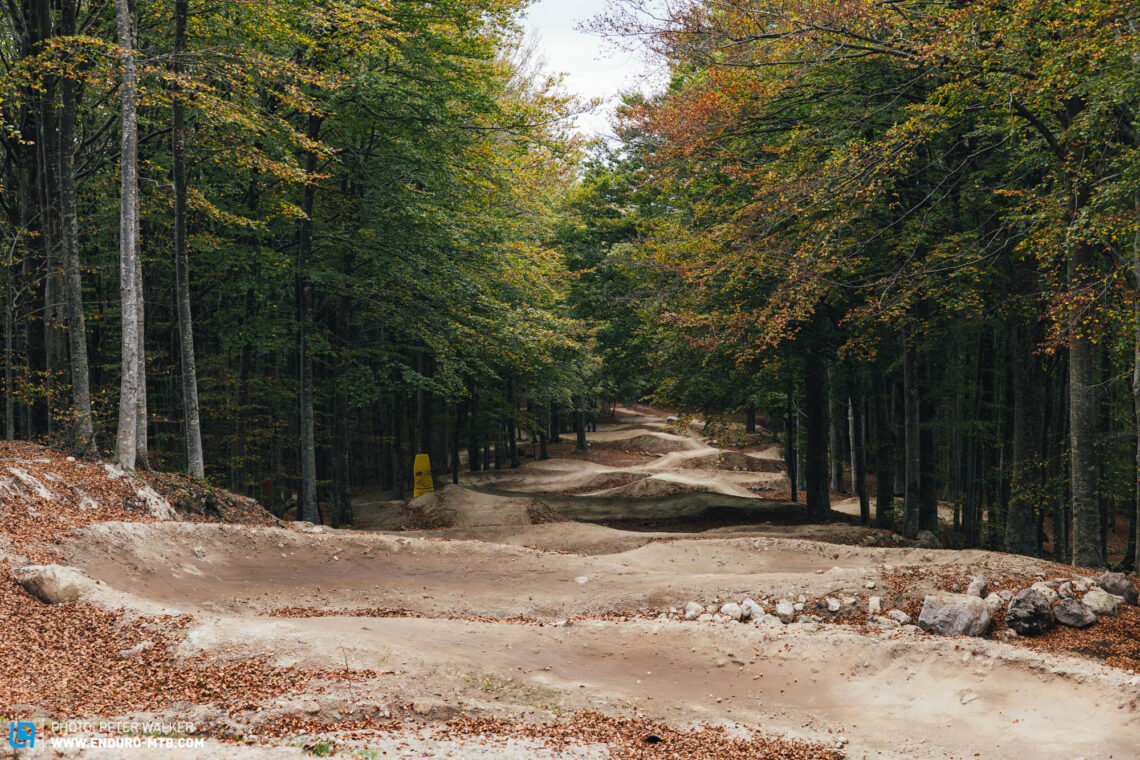
Our insider tip:
The Amiata bike park in Tuscany, Italy
Have you ever heard of Monte Amiata, a 1,738 m inactive volcano in Tuscany? Neither had we until recently. While searching for a great mountain biking destination with lift support in late autumn, we came across Amiata Bike Park, which is relatively unknown in the international circuit. When we got there at the end of October, it had already shut for the season, but the guys from Tasso Trail Solution swept the leaves off the trails and fired up the old chairlift, cranking it up to full speed for the occasion. We had the bike park all to ourselves for over a week – how cool is that? Once again, a big thank you to everyone involved, especially to those who spent hours clearing the trails with leaf blowers, lifting our bikes out of the chairlift for days on end and popping beers open with us in the pizzeria in the evening.
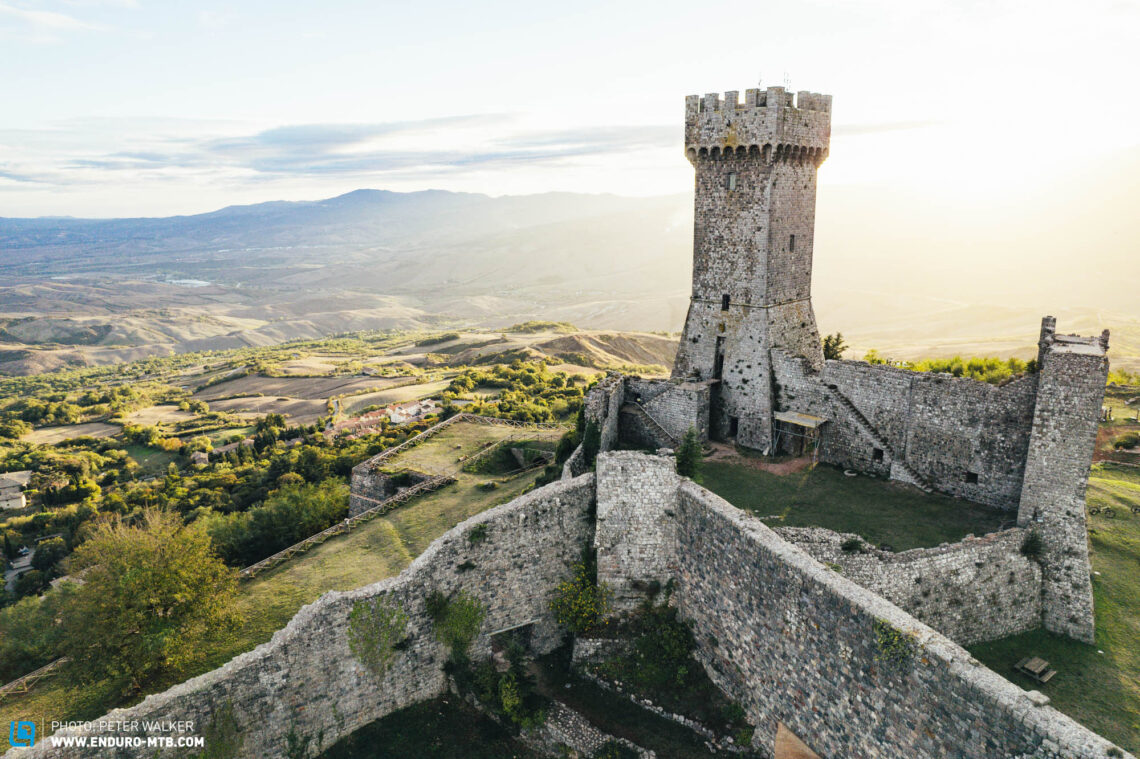
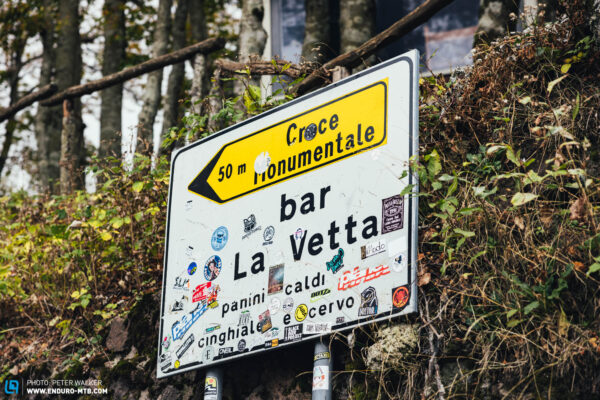
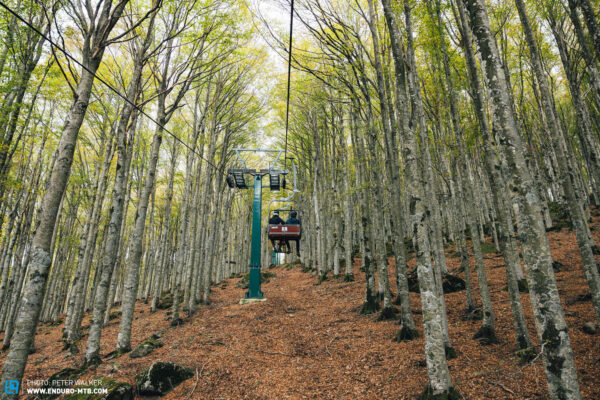

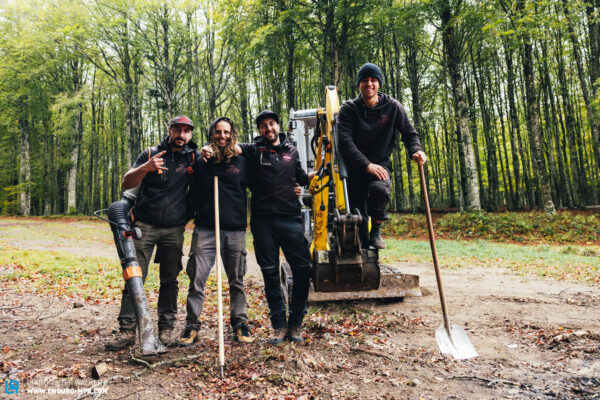

Luckily for us, all the trails were still in excellent shape, and – even better – incredibly good to ride in the wet. Yes, our idea to escape the cold, wet German autumn didn’t quite work out… We highly recommend that you add the Amiata Bike Park to your bucket list. There’s also a bike shop next to the lift, where you can hire a bike and get spares and equipment. During this test, it served as our base, allowing us to set up the bikes and fix mechanicals. At the back of the store, there’s a big workshop that has everything you need to get your bike back on the trails if something goes wrong.
Incidentally, the lift’s valley station is a little further up the mountain, but right in front of the Hotel Le Macinaie we stayed at, which made logistics much easier for us, and it also has a restaurant with a full-size Italian espresso machine – which can’t be missing on a long day at the office! There are more bars scattered around the bike park, where you can enjoy a cosy lunch or a drink. We highly recommend the Bar Jolly, which serves really tasty food and is also super bike-friendly.
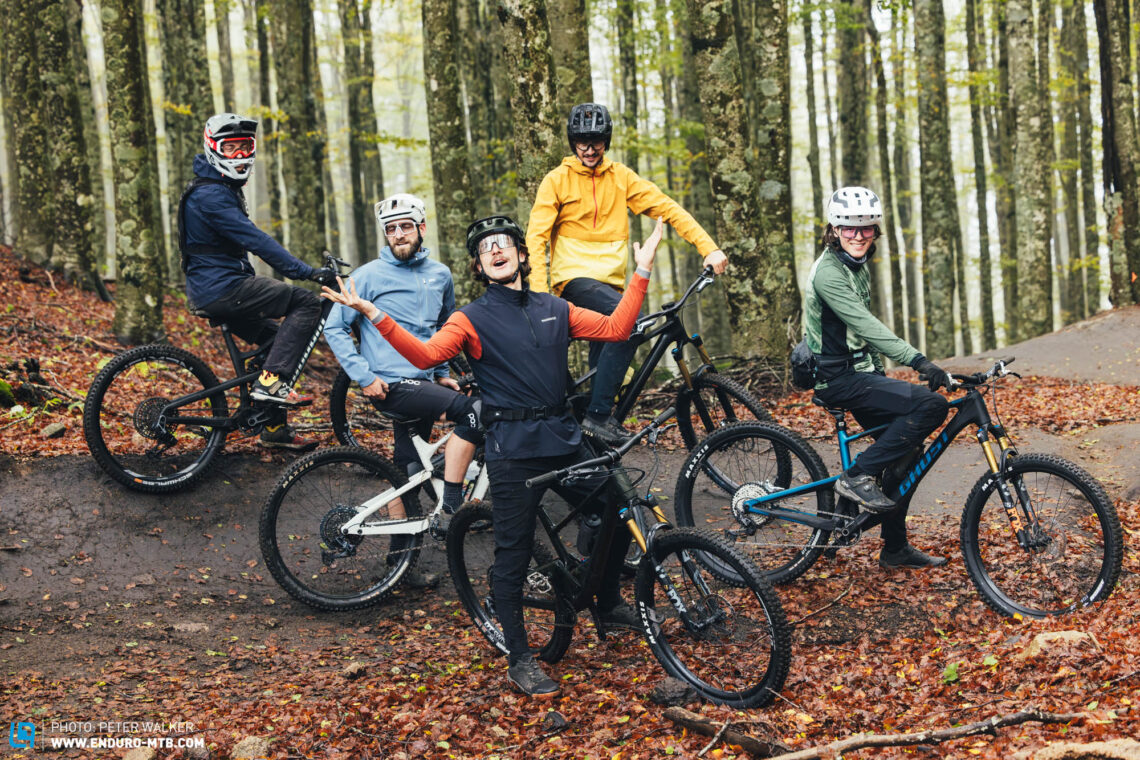
The ENDURO test crew

Judging by his all or nothing approach, Juli has probably watched a few too many James Bond movies in his life. Whether it’s a road bike, e-car or downhill rig, Juli tests pretty much everything he gets his hands on, bringing perspective to our comparison tests like no one else in this team – no matter if it’s about next-level road bike integration or software solutions for e-cars. After all, modern MTBs are increasingly dependent on tech and integration.
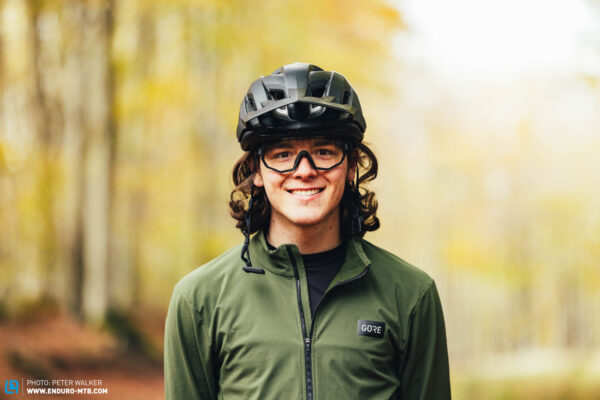
Also known as “the rookie” in our team, Sebi really knows how to drop the hammer on the trails, displaying a fast, wild riding style. He also regularly raises his eyebrows whenever the rest of the crew starts reminiscing about “the good old days” again. Sebi only cares about the here and now, which also applies to his next trail bike. Modern design and innovative technology are crucial aspects for Sebi!
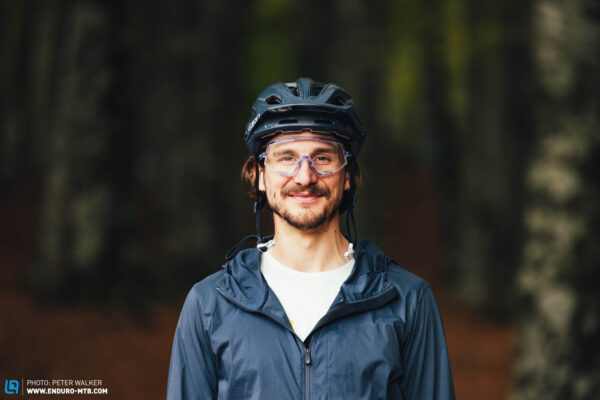
Simon needs huge amounts of muesli to perform at his best, because there’s no fight without a bite! He’s also responsible for the look of the test crew, as ENDURO’s very own fashion police. He has a great eye for detail, both when it comes to the bikes we test and the clothes we wear for the photo shoots, so he always knows what suits him best.

When he’s not guiding in Finale Ligure or wrenching at his local bike shop, he works at the German Aerospace Technology Centre, racking up virtual flight hours until it’s time to hit the trails again. Accordingly, Felix wants a spaced-out trail bike, packed with technology and plenty of suspension pop.
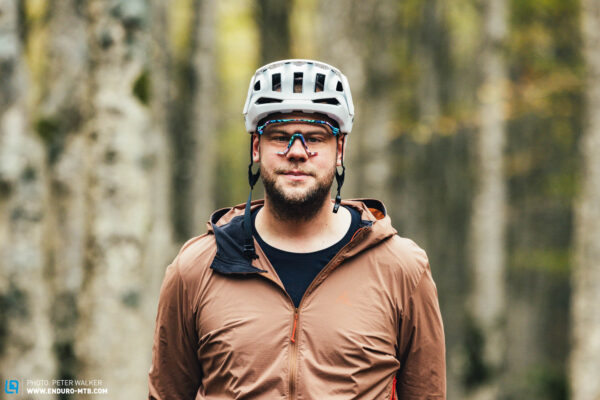
Peter has now given up his more or less successful racing career – if you can call it that – at least when it comes to mountain bikes. Now he rides mountain bikes just for fun, and, of course, for work. With his motocross bike, he’s still giving it the beans! As a result, Peter’s ideal trail bike should focus on fun and reliability.
Our big trail bike comparison test in numbers
Raise the curtain for our numbers!
€ 136,617
is the total price of the bikes in this group test.
€ 33,799 more than last year’s group test
- Which featured one less bike.
- But didn’t include any ebikes.
€ 9,108
is the average bike price.
€ 8,329 is the average price excluding ebikes.
- € 985 more than in the last test.
€ 5,999
is the price of the three cheapest bikes in this test, the YT Jeffsy CORE 5 CF, GHOST Riot Trail Full Party and Cannondale Habit LT 1.
€ 14,000
is the price of the most expensive bike, the Specialized S-Works Turbo Levo SL, making it more than twice as expensive as the cheapest bikes.
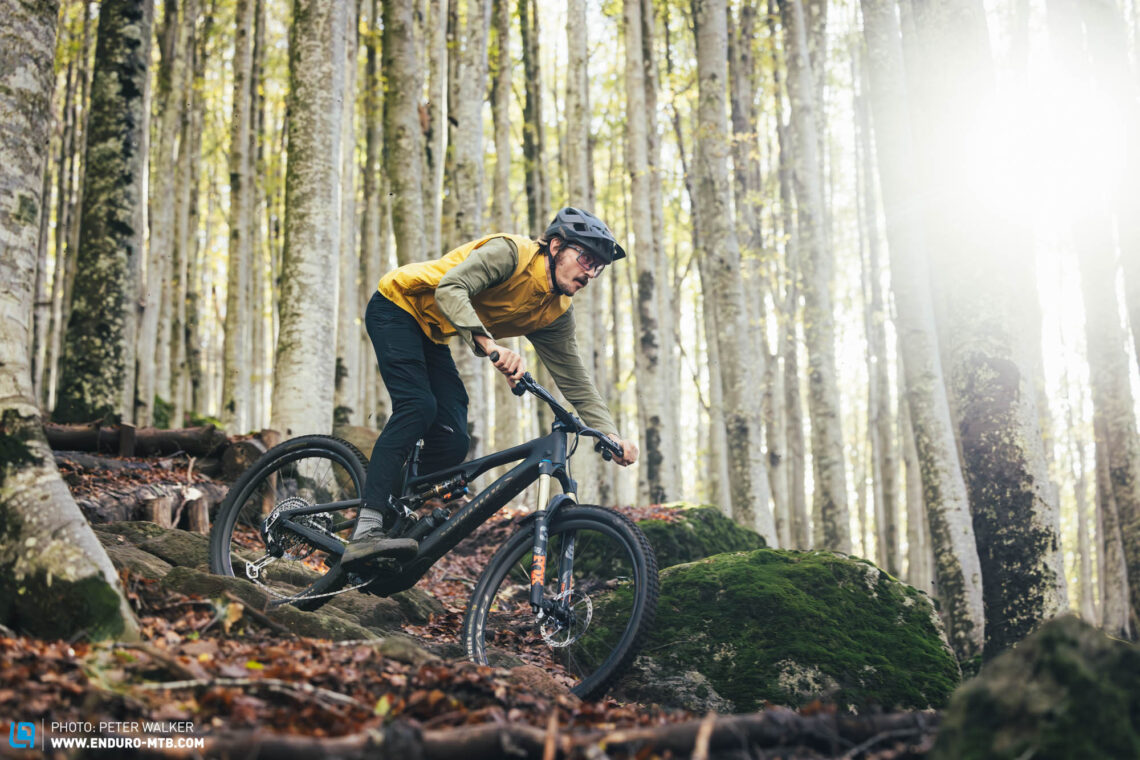
160/155 mm (F/R)
combines the bike with the most travel.
140/120 mm (F/R)
offers the bike with the least travel.
Average front travel: 154 mm
Average rear travel: 143 mm
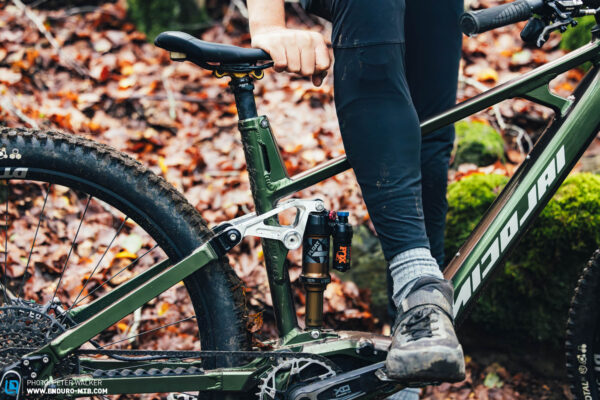

The lightest bike on test weighs 13.4 kg
The heaviest analogue competitor tips the scales at 15.4 kg
17.5 kg is the weight of the lightest light eMTB in test.
20.9 kg for the heaviest light eMTB.
14.4 kg
The bikes weigh on average.
Average weight in our latest enduro bike group test: 16.6 kg
Average weight in our latest downcountry bike group test: 11.4 kg
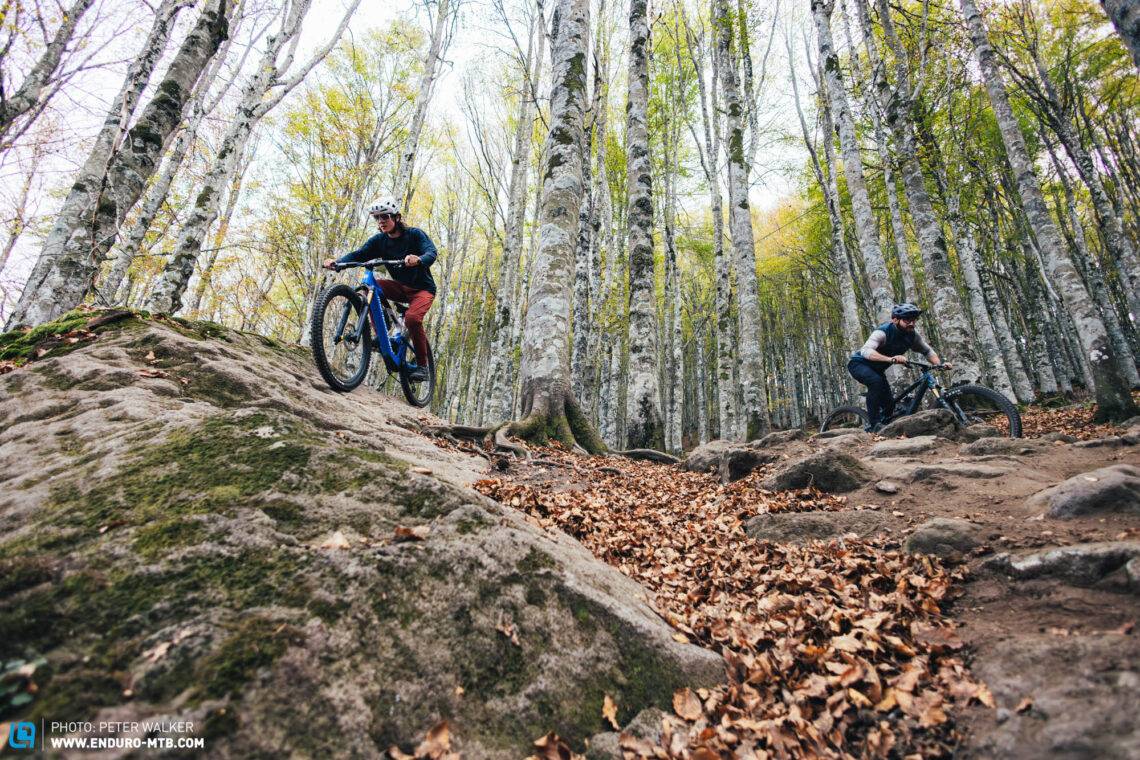
13 bikes are full 29ers.
0 bikes roll on two small 27.5″ wheels.
2 bikes have a mixed wheel setup, aka mullet
(both of which are ebikes).
10
bikes have an integrated storage compartment or mini tool.
RockShox
2 bikes come equipped with RockShox suspension. Both of which combine a Lyrik fork and Super Deluxe shock.
None of the bikes rely on mixed suspension, with components from different brands.
FOX
13 bikes have FOX suspension.
12 of which come with a 36 fork.
Only one bike relies on a 34 fork.
10 bikes have a Float X shock.
2 bikes have a Float DPS.
1 bike comes with a Float X2 shock.
9 bikes rely on SRAM CODE four-piston brakes.
2 bikes feature Shimano XTR four-piston brakes.
1 bike has Shimano XT four-piston brakes.
1 bike comes equipped with Formula Cura 4 four-piston brakes.
1 bike specs Hope Tech 4 four-piston brakes.
1 bike has SRAM Level four-piston brakes, which unfortunately don’t provide enough braking power for a trail bike.
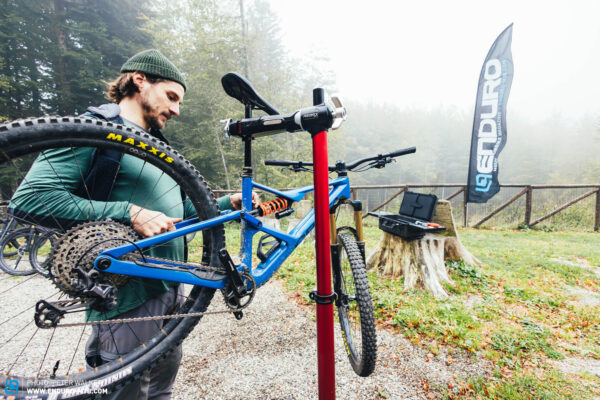

7 bikes rely on
200 mm brake rotors
front and rear.
None of them use big
220 mm discs.
8 bikes rely on a
180 mm brake rotor
at the rear, which overheats quickly, resulting in an inconsistent bite point and potentially leading to painful arm pump.
1 bike relies on
180 mm brake rotors
front and rear, which don’t do justice to the bike’s character and intended use.
Average brake rotor size in our 2024 trail bike group test: 194 mm
Average brake rotor size in our 2022 trail bike group test: 194 mm
Average brake disc size in our 2022 enduro bike test: 202 mm
14 bikes have a carbon main frame.
1 bike employs an alloy frame.
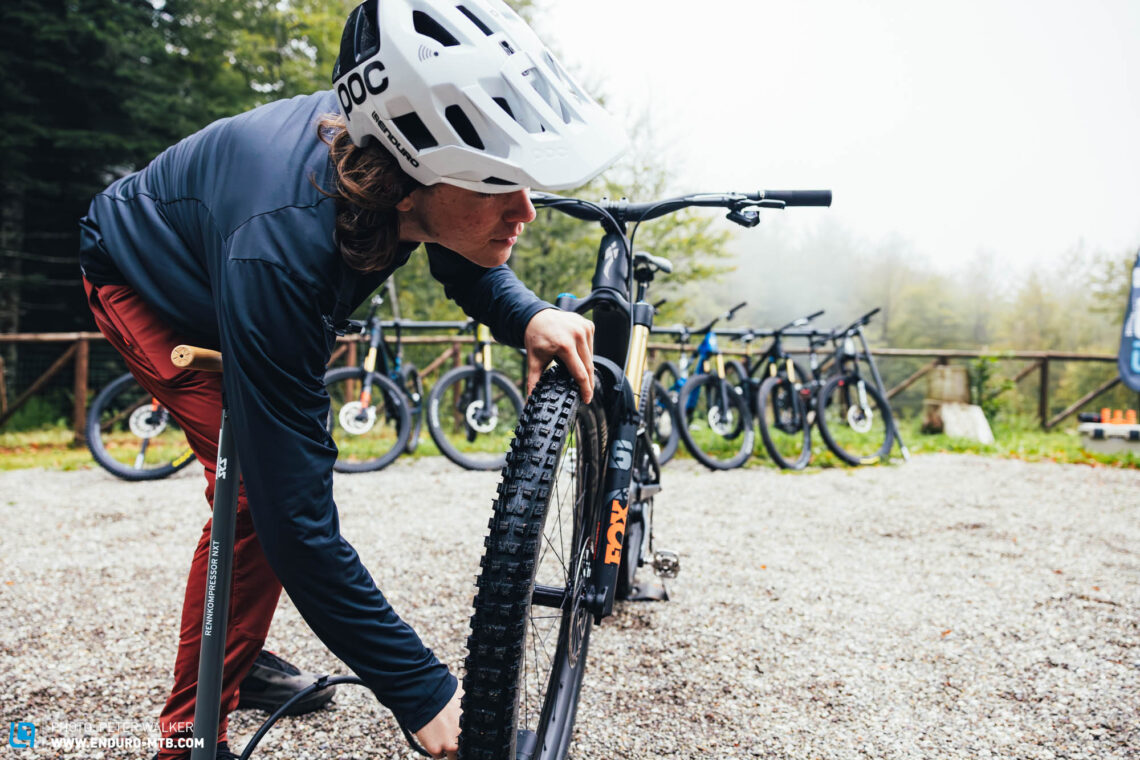
4 punctures and 0 crashes during our test runs.
1 wheel didn’t survive the testing session.
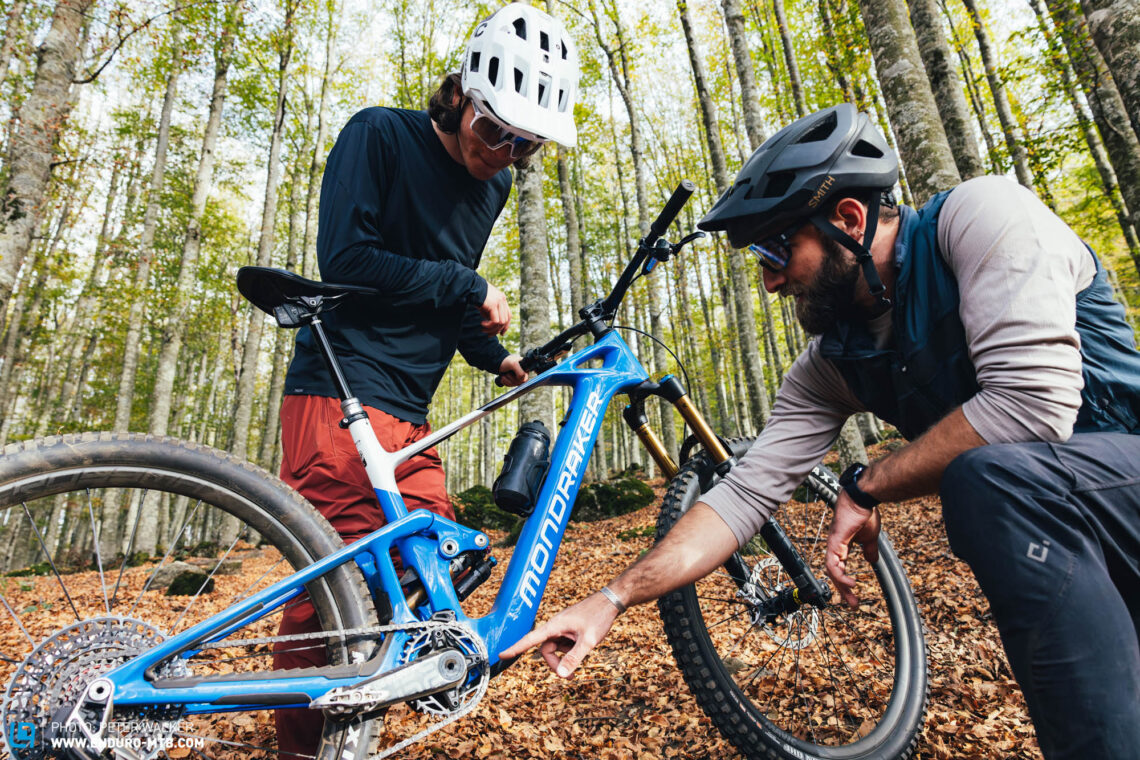
Our test criteria: What defines a good trail bike?
The perfect trail bike shines with strong all-round characteristics, uniting supposed opposites without compromising on the virtues of either. In other words, it’s a harmonious balance between the spec and character of the bike. To define the latter and thus provide you with the best possible advice for your purchasing decisions, we don’t use a rigid scoring system and prefer to provide you with a holistic evaluation of the bike. When it comes to the components, it’s not the price tag or bling factor that matters, but rather how the individual parts harmonise with each other and how they perform together as a whole on the trail.
To help you understand our testing procedures, we’ve summarised the most important criteria for our 2024 trail bike group test.
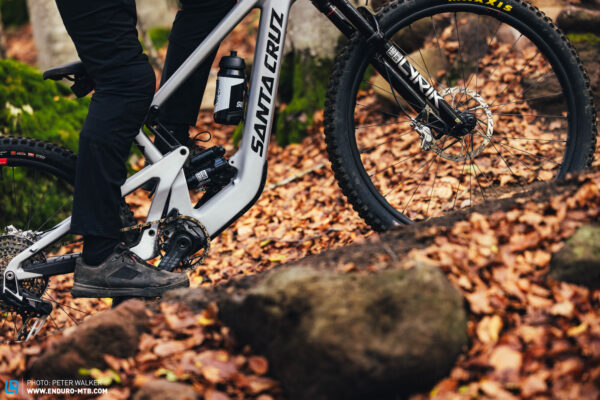
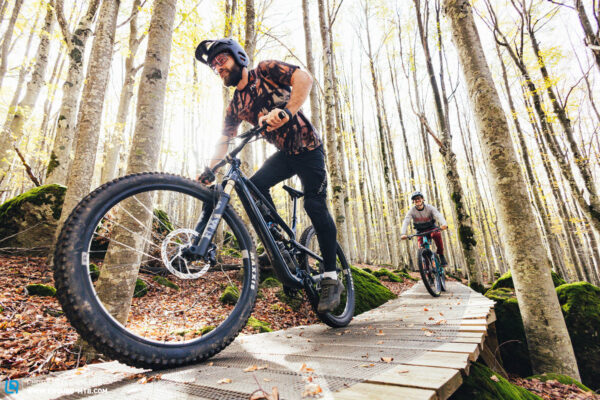
What makes a trail bike the best climber?
Without climbing there’s no descending! And since with trail bikes we tend to make our way to the trailhead solely with the power of our legs, climbing performance is paramount. Therefore, the perfect trail bike must offer a comfortable pedalling position without putting too much pressure on your hands, thus enabling long days in the saddle. At the same time, it’s crucial to have enough weight on the front end, as this allows you to comfortably negotiate steep climbs without having to actively weight the front wheel to keep it tracking.
Needless to say, the rear suspension also has a major effect on the bike’s climbing qualities and should therefore be as efficient and pedal-neutral as possible, even without activating the climb switch. This will ensure sufficient traction even on technical climbs, allowing you to negotiate nasty root carpets and smaller obstacles while at the same time providing a higher level of comfort than a locked-out platform. Just one of our competitors relies on a bar-mounted lockout lever, allowing you to quickly adjust the suspension to the riding situation, but also creating a little confusion on the trail with countless levers in the cockpit. Weight and rolling resistance also play a decisive role when riding uphill, especially when accelerating from a standstill. Once the mass is in motion, however, weight only plays a secondary role, while shallow-profiled tires with hard rubber compounds tend to spin out of control all too easily in loose terrain.

Which handling characteristics are typical of trail bikes?
Trying to determine the handling of a bike based on isolated geometry values isn’t just wrong but also risky. Despite some near-identical geometry on paper, handling differs enormously, with the suspension, the relationship between measurements (i.e. reach to stack ratio) and the setup playing a major role. A good trail bike positions its rider centrally, is intuitive and easy to ride, and also forgives the odd riding mistake. Regardless of whether you’re an inexperienced rider or just exhausted after an epic day in the mountains, intuitive and predictable handling is a godsend. However, some bikes are the exact opposite, requiring a great deal of concentration and excellent riding skills, forcing you to actively shift your weight around the bike to generate traction. If you’re not 100% in control, even small distractions can quickly lead to a crash. In a nutshell, the more intuitive the handling, the faster and safer you can ride a trail bike.
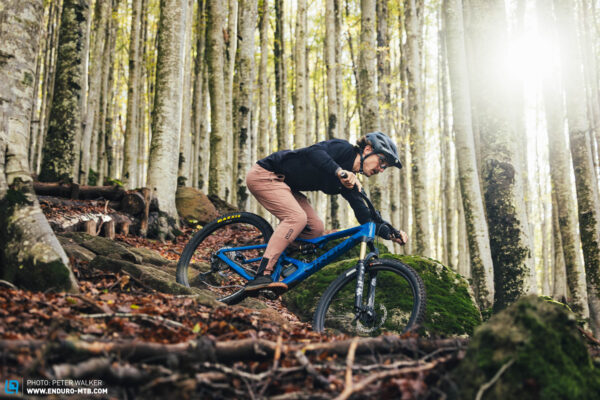

Composure vs agility
Although no two riding qualities are quite as antithetical, the best trail bikes manage to combine them. Composure isn’t just about bombing through a rock garden at full pelt but also about having sufficient reserves to swallow big hits and make you feel safe in the process – which is what encourages us to ride fast in the first place! Agility is the word we use to describe a bike’s ability to move and change direction quickly and efficiently, and thus how easy it makes it to snake through a narrow trail.
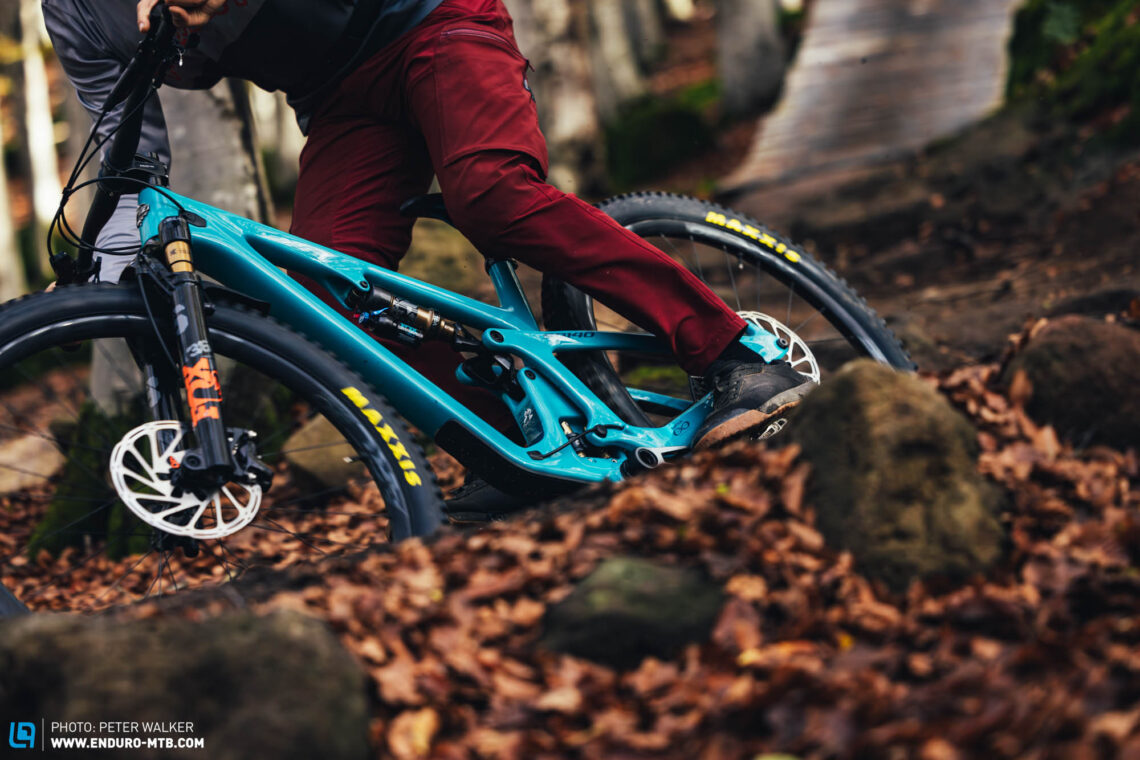
What should the perfect trail bike suspension be capable of?
The performance of a trail bike’s suspension isn’t determined solely by the quality or characteristics of its components, though it is heavily influenced by the shock tune and setup. Simply put, there’s only one way to find out how your suspension performs: taking your bike to a trail! The perfect suspension is a fine compromise that combines a high level of traction and responsiveness with sufficient mid-stroke support, lots of pop for playful riding manoeuvres and good reserves for botched landings. Bikes like the Specialized S-Works Turbo Levo SL and the YETI SB140 LR gobble up nasty impacts with ease, and still generate lots of traction, allowing you to focus on the trail ahead. Nonetheless, they don’t swallow up the rider’s input like a sandbag, allowing you to play with the terrain and pop off features on the trail as well.
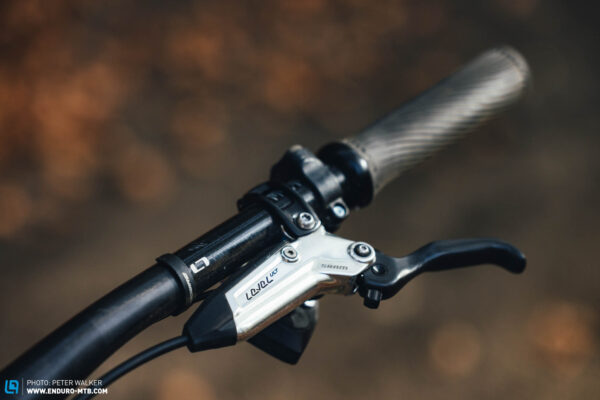

What does the perfect trail bike spec look like?
We all just want to ride our bikes and hate wasting time fixing this or that on the trailside. That’s why it’s crucial to choose your spec according to the intended use. However, many bike manufacturers are still cheating to keep the weight down and make their bikes look better on paper and shop floors!
Without a doubt, the brakes are the most important component on a trail bike. Not only are they your guardian angel in hairy situations, but they also have a huge influence on arm pump and fatigue, which in turn can be seriously detrimental to your safety. As a logical conclusion, saving weight on the brakes isn’t just thoughtless, but also incredibly dangerous! However, our 2024 trail bike group test proves that many manufacturers agree with us and features more powerful brakes and bigger rotors than any of our previous group tests – keep it up guys! Only Mondraker’s light eMTB, the Neat RR SL, comes with undersized brakes, which are actually designed for XC riding. We recommend upgrading the brakes, as this limits the bike’s potential and safety enormously.
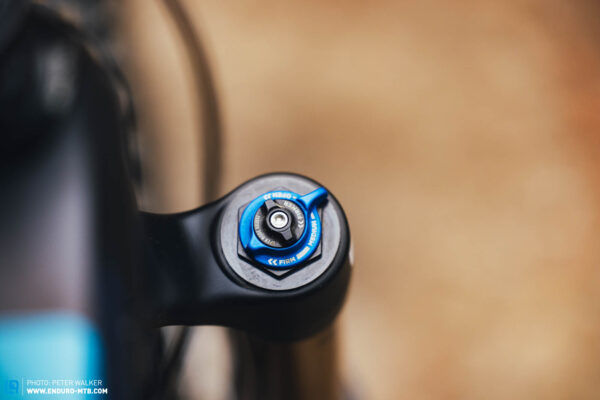
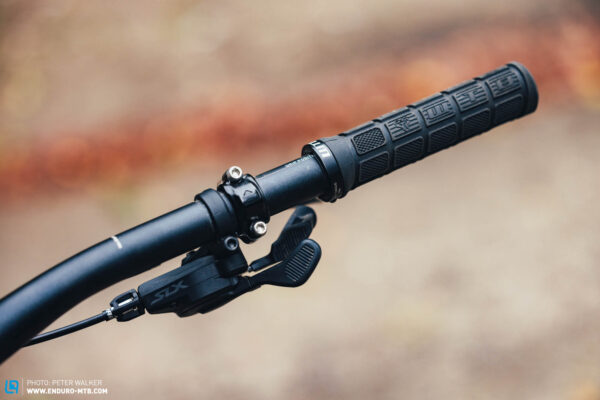
Manufacturers also like to skimp on drivetrains, combining high-end rear derailleurs with cheaper shifters. While this might look great on the shop floor, it doesn’t bring any advantages to the trail because the quality of the shifter is key to smooth shifting performance, and basic models lack some of the practical features of their high-end counterparts, thus making a bling rear derailleur totally pointless. The same goes for the cassettes, but this is only a concern in terms of weight and durability, and doesn’t particularly compromise the performance on the trail. The GHOST RIOT Trail Full Party is a good example of this tendency, pairing a high-quality XT rear derailleur with a cheaper SLX shifter, which doesn’t support the derailleur’s full range of functions, meaning that you’re riding around with expensive technology you can’t even use. Furthermore, the GHOST also features a bling FOX 36 fork with fancy Kashima coating, which bears the distinctive look of the Factory flagship model. Upon closer inspection, however, the fork employs the cheaper FIT4 damper, which doesn’t even get close to its top-tier GRIP2 counterpart in terms of trail performance.
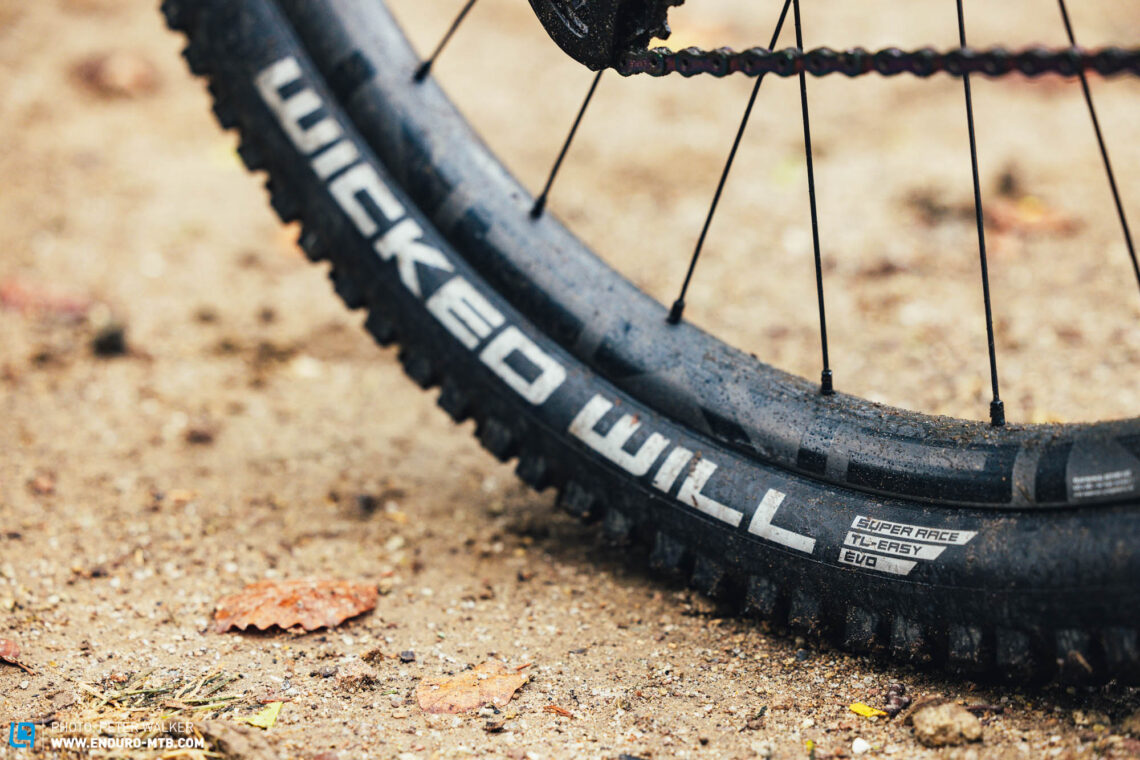
For some brands, unfortunately, speccing lighter, less robust tires is still a great way to make their bikes look better on paper. As far as rubber compounds go, it makes sense to combine a softer, grippier compound at the front for traction and control, with a harder compound at the rear to ensure lower rolling resistance and a longer service life. The tire casing, on the other hand, should be chosen according to the character and intended use of the bike, as well as the type of wheelset used. Unlike alloy wheels, carbon rims only know two scenarios with nasty impacts, either getting away entirely unscathed, or landing straight in the bin. That’s why carbon rims should always be paired with a robust tire casing, not least because they’re significantly more expensive. On the other hand, a dented alloy rim isn’t that big of a deal and won’t necessarily ruin your day. Moreover, a robust casing allows you to run lower tire pressures, ensuring more traction and additional damping, both with smaller vibrations and bigger impacts. In addition, some trail bikes in this group test come standard with shallow-profiled tires, which might roll extremely well in dry conditions, but quickly get you in pickle on wet, muddy terrain. In a nutshell, a more aggressively-profiled tire at the front generates plenty more traction and has a very small effect on rolling resistance, because there’s far less pressure on the front when climbing.
Unfortunately – and this is a big one – very few bikes in this test have a spec which does full justice to the potential of the bike and its intended use. This is why we’ve added a “Tuning Tips” section at the bottom of each review, suggesting the most beneficial and cost-effective upgrades to get the most out of the bike.
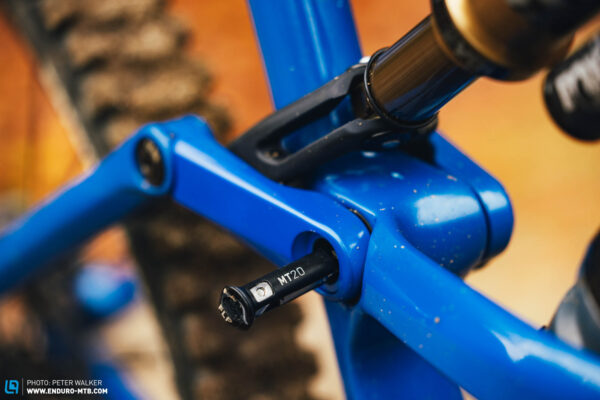
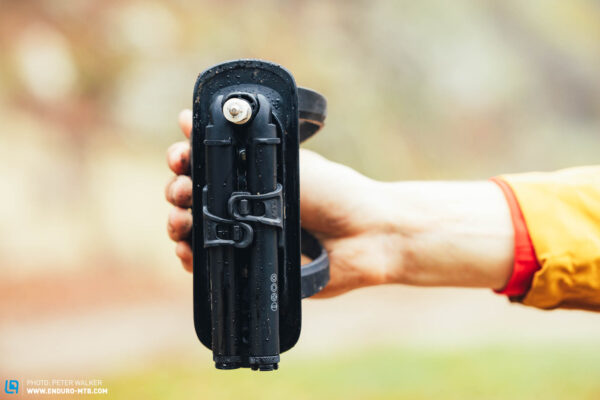
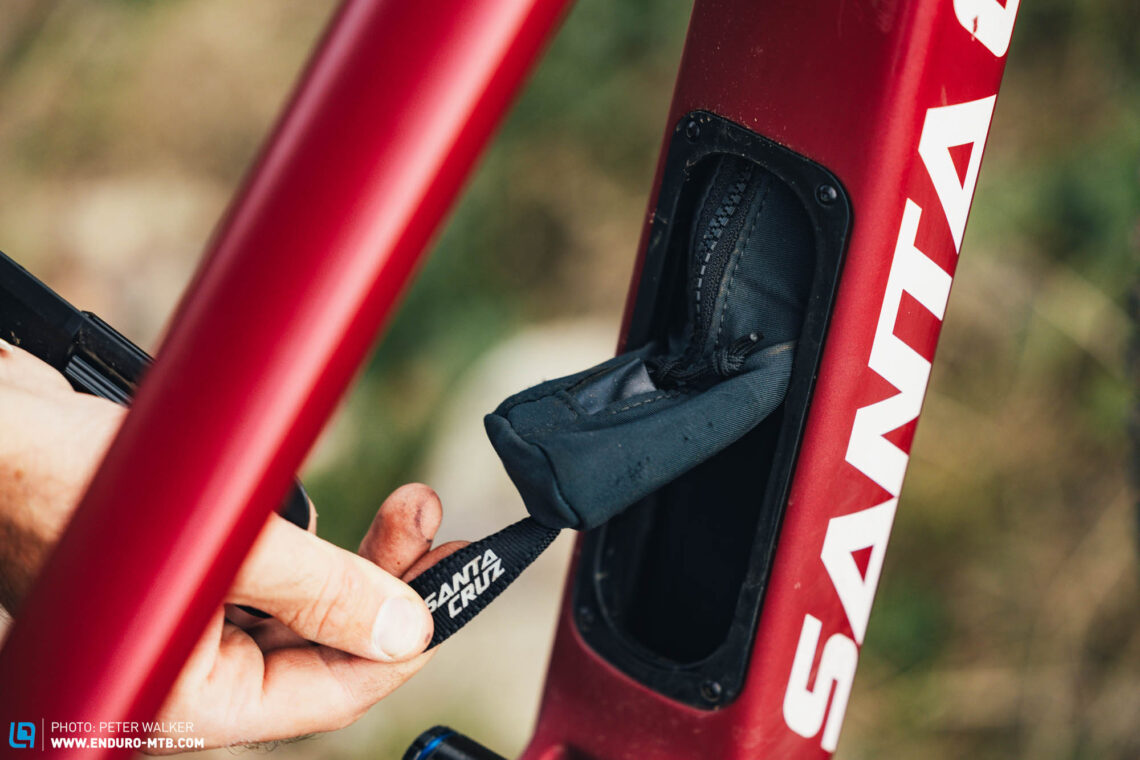
Which clever features and detail solutions should be standard on a modern trail bike?
Clever and useful frame features can, albeit indirectly, boost the fun factor of a trail bike enormously. For example, additional storage options such as an integrated storage compartment or tool mount allow you to leave your backpack or hip pack at home, making your rides more comfortable. On the other hand, threaded bottom brackets make it easy to replace worn bearings, saving you precious time and embarrassing swearfests. All bikes in this group test have at least one bottle cage mount, while integrated storage compartments and tool mounts seem to be rather the norm than the exception. However, the systems differed greatly in quality and ease of use, and no one really likes to fiddle around with a finicky storage compartment when a pinch flat has already put you in a foul mood. In this respect, more is always better, and every additional storage option is one less object (or several) you have to carry on your body. This also helps reduce the risk of injuries, because falling on a mini tool or CO2 cartridge ain’t fun! Internal cable routing, frame protection, universal spares and additional plastic covers like mudguards help to reduce wear while increasing the fun factor and improving the look of the bike. Generously-sized protectors on chainstays, seat stays and the down tube ensure a quiet ride and protect the frame from stray rocks. All of the bikes in this test feature SRAM’s UDH universal mech hanger, which can be found in most bike shops around the world, and is easy to replace. By contrast, conventional derailleur hangers are specific to the frame, and can be difficult to get hold of in a pinch.
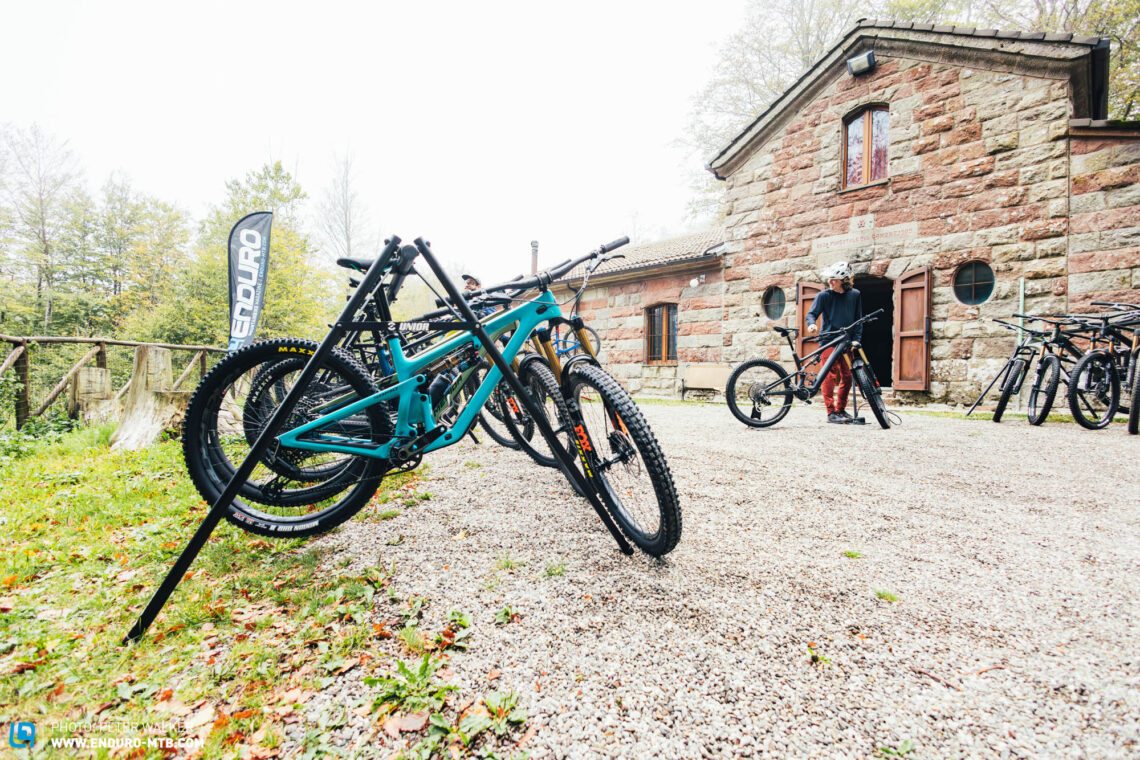
Does the spec list of a trail bike speak for its performance?
In this group test, price only plays a subordinate role. It’s not that we don’t care about money, but we’re deeply convinced that the price of a bike should always be commensurate with its performance. That’s why we don’t calculate value for money based on the spec list of a bike or the amount of bling you get for your dosh. We’re more concerned with how a bike performs on the trail, and how it benefits the rider. What’s the point in rocking the hottest components available on the market if the bike rides like a milk carton? Even pricey bikes with lower-end specs can offer good value for money, provided they deliver where it really matters, in the same way that supposedly cheap bikes with good components can get a bad rating if they don’t deliver on the trail. What really counts is the interaction of all elements, from the suspension through the geometry all the way to the spec. And that’s exactly why the huge price gap of over € 8,000 in this group test is actually irrelevant. On the contrary, it will help you understand what’s important to you, and what you actually need!
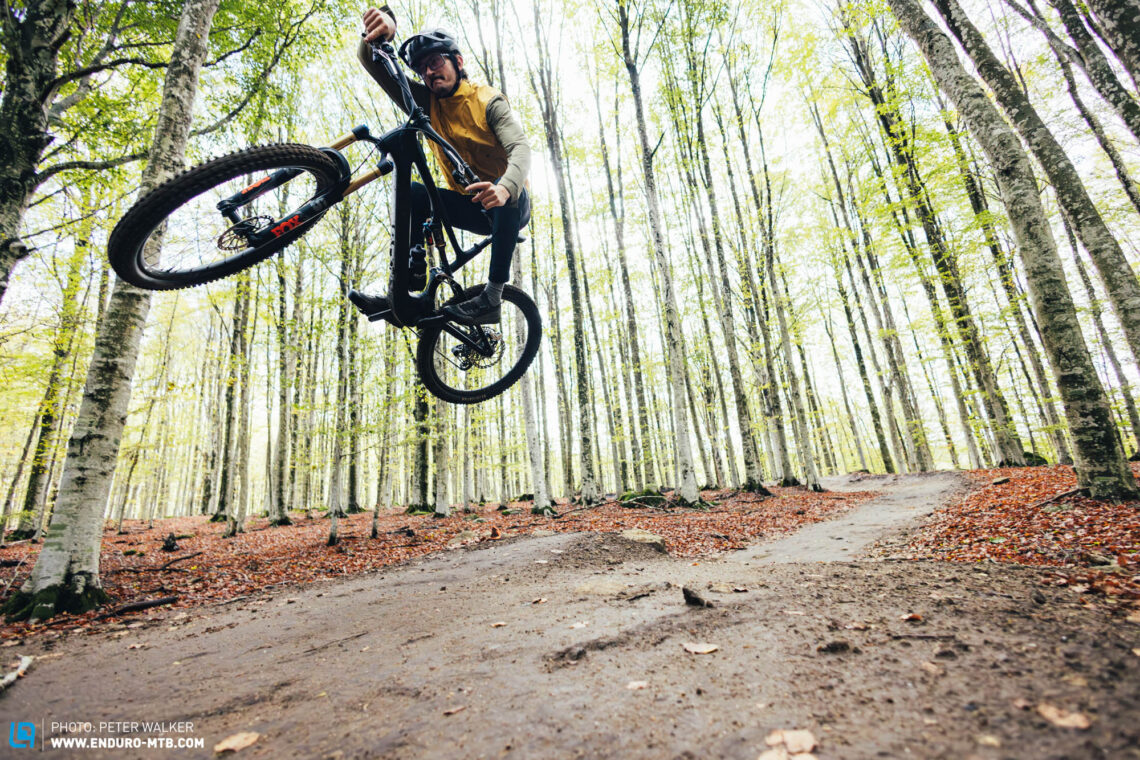
Analogue trail bike or Light eMTB?
Sometimes, the differences between analogue trail bikes and light e-mountainbikes only become evident upon closer inspection. This is mainly down to the fact that compact motor systems, like the Mondraker’s TQ-HPR50 and the Specialized SL 1.2 drive of the Levo SL, allow for a discreet, seamless integration into the bike’s bottom bracket area. The Bosch SX motor of the NICOLAI and the FAZUA Ride 60 in the Santa Cruz, on the other hand, are slightly bulkier, but also deliver more oomph, ensuring a more distinctive shuttle feeling. In other words, they support you more eagerly than their two compact opponents on your way back to the trailhead. Given that the motor system has a massive influence on the bike’s character and handling, you should get familiar with the different concepts before committing to one system in particular, and know exactly what you want from your new light e-mountainbike. Long shuttle laps or a natural ride feeling? A removable battery you can complement with a range extenders, or software that tells you how much time you spent in the air? Anything is possible, you just have to pick your weapon of choice. You might find it helpful to read this in-depth motor comparison test on our sister magazine E-MOUNTAINBIKE, where we pitted the four motor systems against each other.
Overall, our latest 2024 trail bike group test has clearly shown that light e-mountainbikes can deliver just as impressive a trail performance as their analogue counterparts, offering similar handling characteristics and a comparable level of agility – and in some cases have even more pop and agility than their non-electric rivals! It’s not the weight, but rather the geometry and rear suspension kinematics of a bike that define its liveliness and manoeuvrability, allowing you to transfer your energy into the trail without the suspension absorbing it like a sandbag. And you know what is the best thing about a light eMTB? Less power uses less energy, so you don’t have to worry about the range when using a smaller battery!
The tops and flops in our 2024 trail bike group test
Tops

Many bikes proved to be excellent climbers and at the same impressed with a tremendous downhill performance.
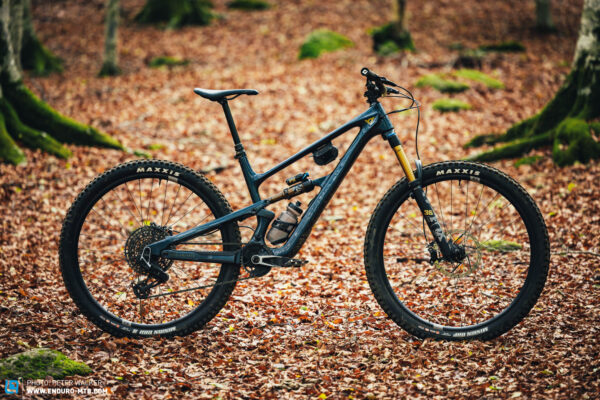
Some of the cheapest bikes in this test – like the YT JEFFSY – offer a top spec at a fair price.
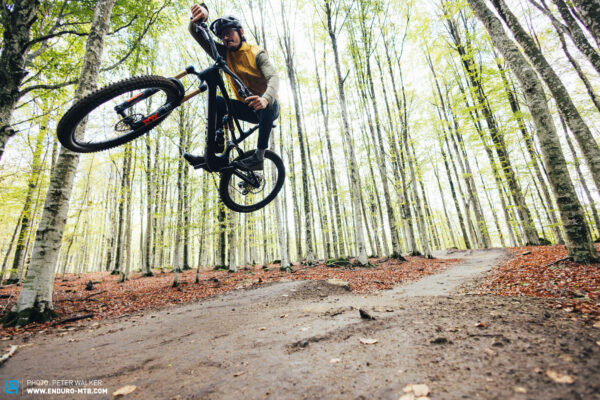
Modern light e-mountainbikes can easily keep up with their analogue counterparts and are sometimes even nimbler through berms and easier to pop into the air.
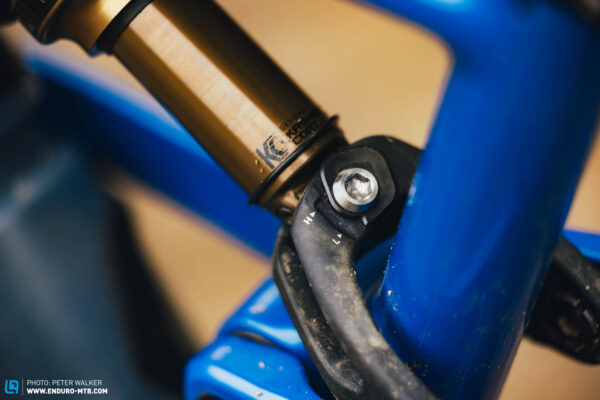
Almost all trail bikes in this group test allow you to fine tune your ride through external geometry and kinematic adjustments.
Flops
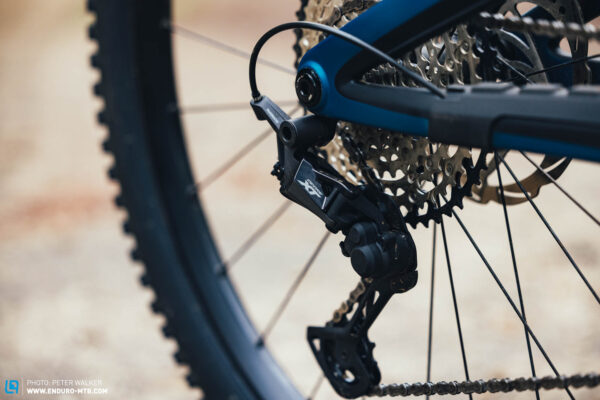
Some manufacturers still combine high-end components with cheaper ones to make their bikes look better on paper and shop floors – no thanks!

Shallow-profiled front tires make little sense on most trails, and have no place on a trail bike.

The average dropper post length in size L is just 176 mm. However, most modern trail bikes have a generous insertion depth, meaning that it’s technically possible to use long-travel droppers.

Some sinfully expensive bikes in this test rattle like a flag-post during a storm! When you spend this sort of money, you want to enjoy your ride in all peace and quiet.
Which is the best trail bike of 2024? Winners, losers and other recommendations.
Not only did our 2024 trail bike group test expose many weaknesses and some half-baked solutions, but also demonstrated that trail bikes are indeed undergoing a process of permanent evolution, with features once highly polarising becoming standard over the years. Furthermore, lots has changed as regards to safety and trail performance, both up- and downhill. It’s also incredibly cool that one of the cheapest bikes in the test secured not only the coveted Best Buy tip but also the test victory, proving that there are still top bikes for less money out there! By the time we packed up our shit and left Tuscany, we also had some other exciting recommendations, because the test field was packed with awesome bikes! Here’s a clear overview of the test field and the individual characters of the bikes.
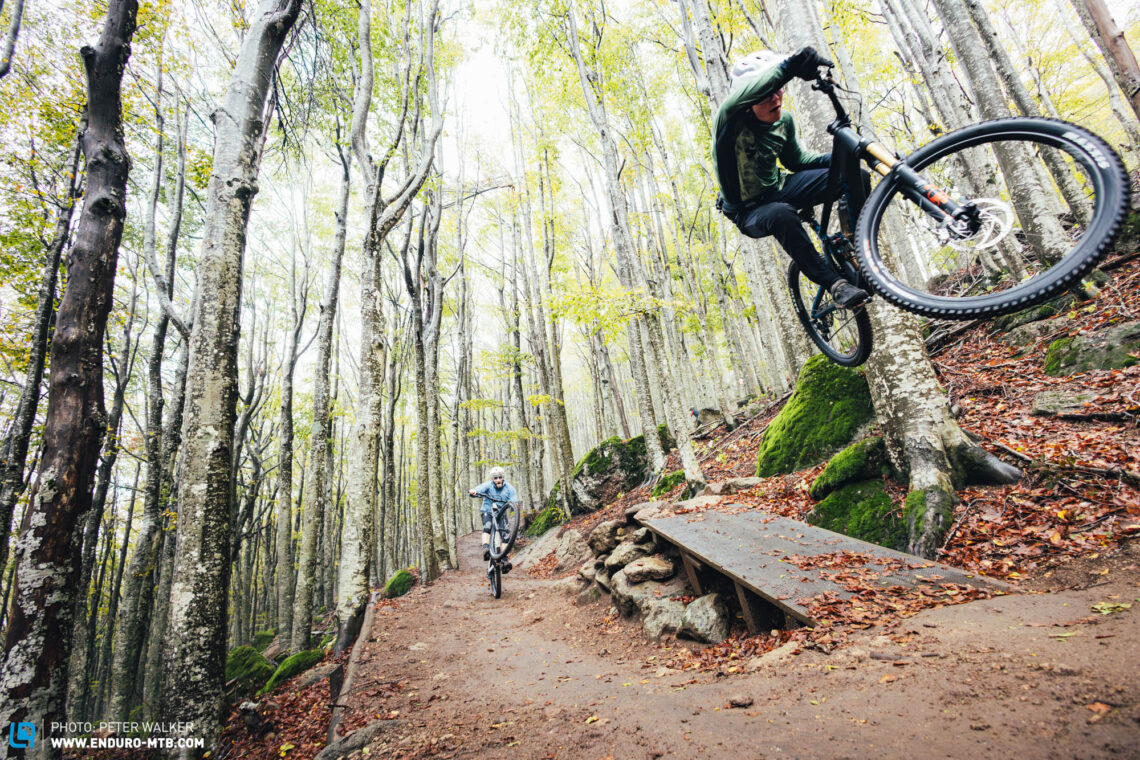
The remaining test field in our 2024 trail bike group test
Although only a few bikes rolled out of our big 2024 trail group test with a champagne bottle and a medal on their stem, most participants passed the tests with flying colours, impressing our test crew with countless cool features and unique characters.
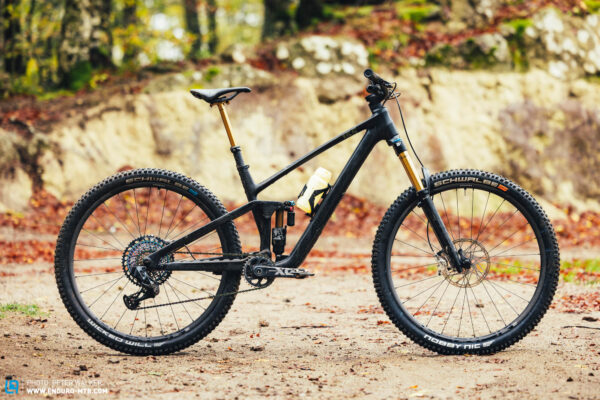

The CUBE ONE55 C:62 SLT 29 might look promising at first, but turns out to be a bit of a sheep in wolf’s clothing. On paper, you get a top-tier spec and some interesting frame features at a very attractive price. Upon closer inspection, however, it has some major flaws in the spec and fails to impress on the trail. The high front end conveys huge amounts of confidence, but the handling is somehow simultaneously sluggish yet nervous, which has a real impact on the bike’s trail performance.
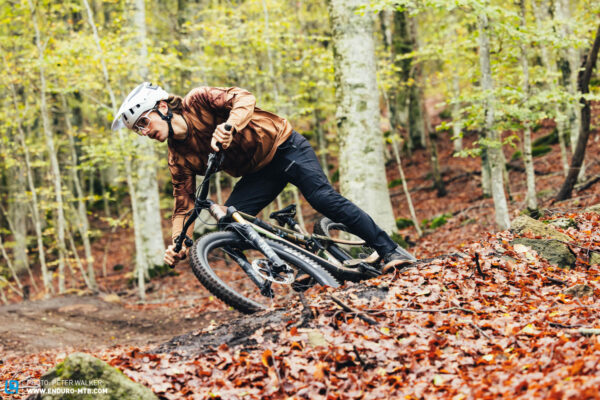

As the most expensive analogue bike in this test, the MERIDA ONE-FORTY 10K convinces with a good frame platform and several clever features, like the tool strap and long-travel dropper post, which can be inserted all the way into the frame across all sizes. On the trail, the MERIDA delivers a smooth performance, but feels a little sluggish, which spoils the fun factor quite significantly. The suspension lacks a little sensitivity, but shines with tons of support, allowing it to pick up speed on flowing trails.
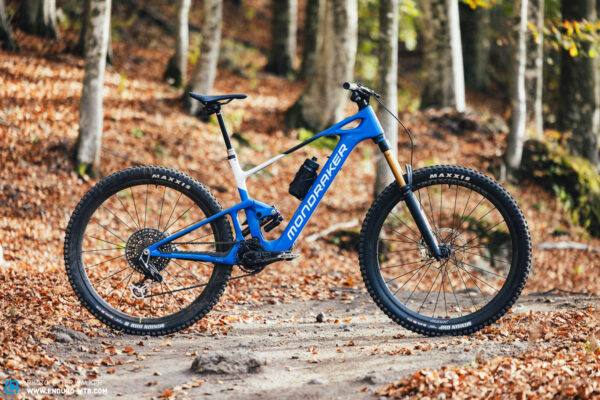

The Mondraker Neat RR SL is a potent ebike for the everyday gnar. If you pick your lines carefully, you’re guaranteed to be the fastest rider on your local mountain. One thing’s for sure: with its agile character, the Mondraker fits perfectly into our trail bike group test, despite having a motor, rewarding experienced riders with tons of feedback and fun.
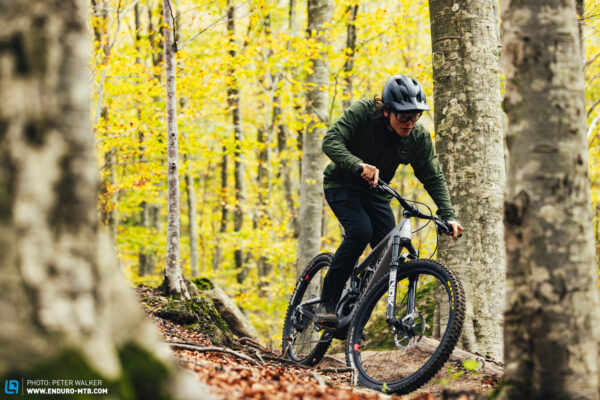
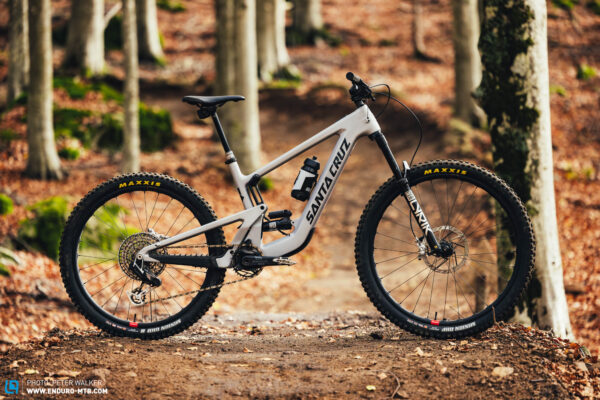
With the Santa Cruz Heckler SL XX AXS RSV, the Californian manufacturer has made a successful debut in the light eMTB segment, delivering a mean fun machine that can easily keep up with its analogue competitors. The intuitive handling makes it suitable for both beginners and experienced riders alike. The motor doesn’t affect the bike’s riding performance with its additional weight, but encourages you to squeeze in one more lap. Although it wasn’t able to secure victory in this comparison test, it’s right up there with the most fun bikes on test.
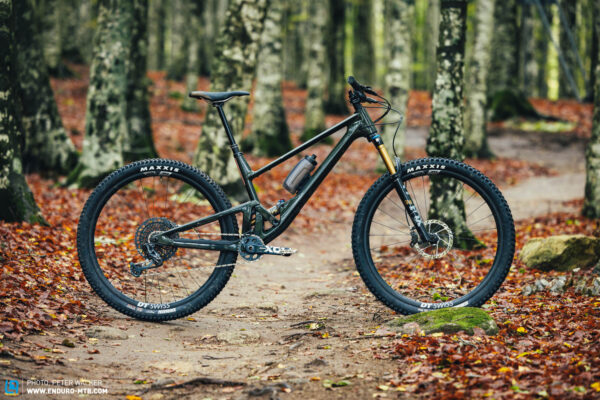
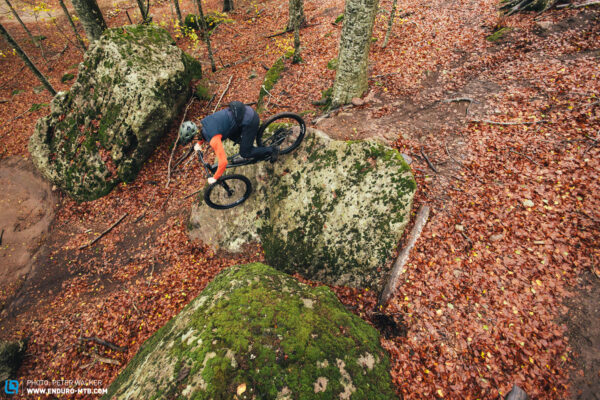
Despite generating the least rear travel on test, the SCOR 2030 X01 really drops the hammer downhill, leaving some of its long-travel competitors behind in a cloud of dust. A few spec upgrades would improve its performance even more! However, the SCOR shows its strengths above all on easy flow trails, where it transforms the mountain into a playground, as well as uphill, where you’ll fly to the trailhead with great agility and efficiency.


With its seamless integration and enclosed shock design, the SCOTT Genius ST 900 Tuned is by far the tidiest looking competitor in our 2024 trail bike comparison test. The TracLoc system and low system weight also makes it the best climber amongst the analogue competitors. Downhill, however, it requires an experienced rider who can handle the direct feedback and firm suspension, as well as the additional fatigue resulting from the unfiltered vibrations.
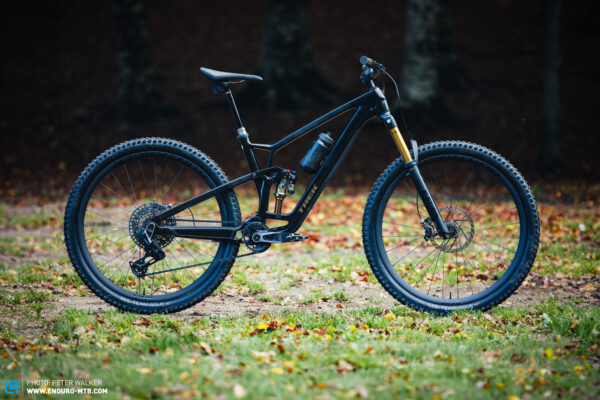
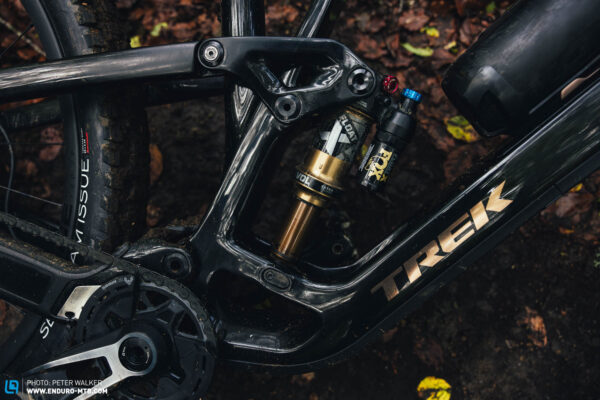
By contrast, the Trek Fuel EX 9.9 X0 AXS T-Type is discreetly understated, both visually and on the trail. However, behind the inconspicuous look hide countless geometry and kinematics adjustments, as well as smart features like the integrated multi-tool and storage compartment – all wrapped up in a high-quality finish. On the trail, the Trek’s intuitive handling and excellent feel-good factor straight out of the box make it suitable for all types of riders. The Trek handles anything you can throw at, without excelling particularly at one thing.
The best trail bike of 2024:
YT JEFFSY CORE 5 CF
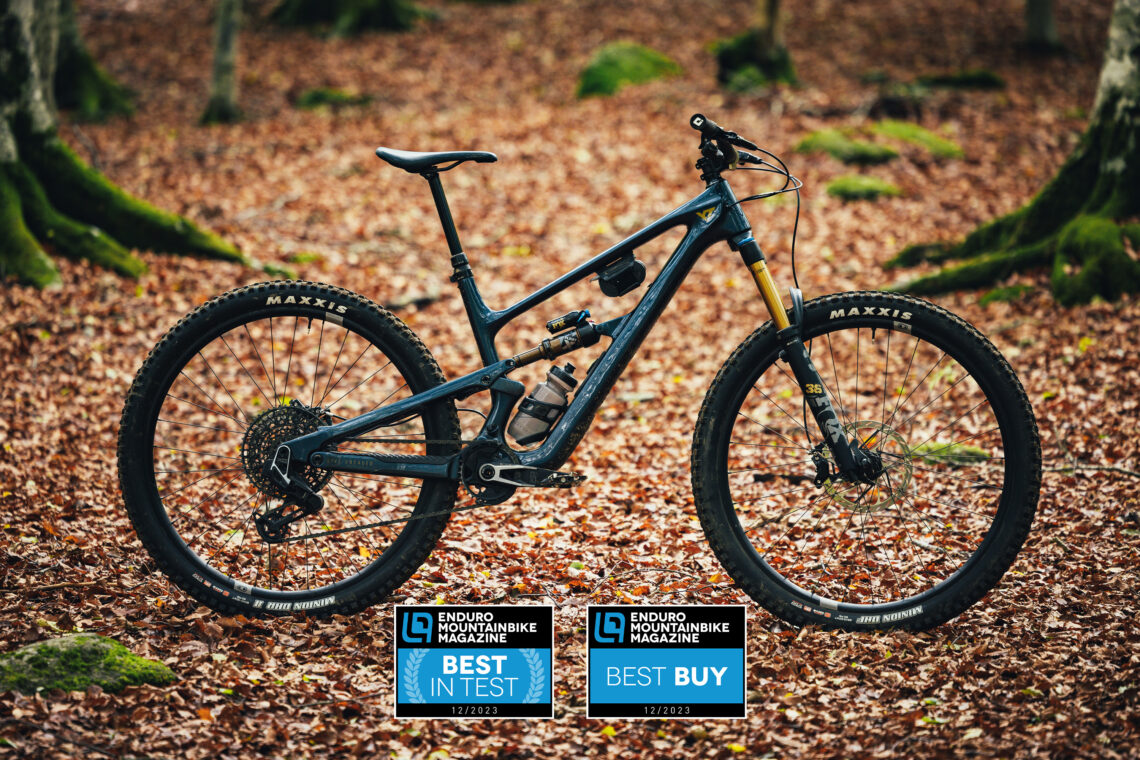
15.3 kg in size L | € 5,999
At the time of this comparison test, the YT JEFFSY CORE 5 CF hadn’t been officially released yet. As the further development of a well-proven platform, the latest descendant of the JEFFSY dynasty comes with plenty of useful features, like the integrated storage compartment. Retailing at € 5,999, it’s the most affordable bike in the group test and yet features a top-tier spec that perfectly matches the bike’s potential – we struggled to find many things we would want to improve. On the trail, the YT slaps a massive grin on your face and makes you feel at ease from the get-go, striking an excellent balance between agility and composure: whether you want to plough your way through rock gardens at Mach 10 or flick the rear end from one berm into the next with a loud braaap, the JEFFSY is up for it! No trail bike in this comparison test combines supposed opposites like agility and composure as harmoniously as the JEFFSY – and the price/spec ratio is second to none! As a result, the YT JEFFSY CORE 5 secures not only our coveted Best Buy badge but also the test victory. A double award is very rare for us – YT has succeeded with the JEFFSY. Chapeau!
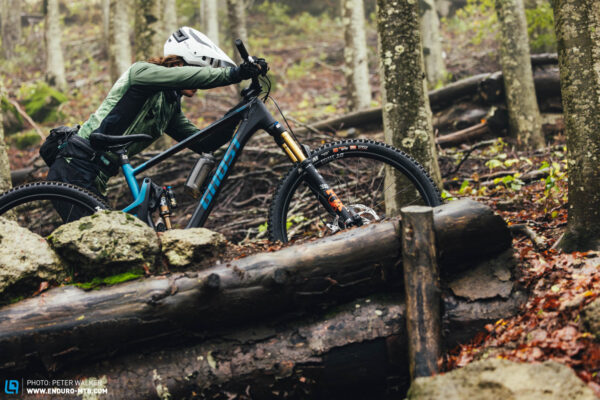

The bitter lemons in our 2024 trail bike comparison test
Although we don’t particularly enjoy picking losers in a comparison test, it’s important to us to be as honest as possible when it comes to helping you out with your next purchase decision. Unfortunately, this also includes advising you against some bikes if necessary. Nothing is more frustrating than spending your hard-earned money on a bike that delivers far less than it promises, especially if there are bikes that offer significantly more for the same or even a lower price.
While its name suggests an authentic party animal, the GHOST Riot Trail Full Party hides in the kitchen when the music gets loud. The spec might look promising on paper but some of the components suggest a level of performance they can’t deliver. On the trail, the plush suspension generates good traction but offers little support, absorbing the rider’s input like a sandbag. In addition, the RIOT Trail is neither agile nor composed. One positive aspect is the intuitive handling, which makes it a good choice for beginners who won’t push it too far beyond its comfort zone.
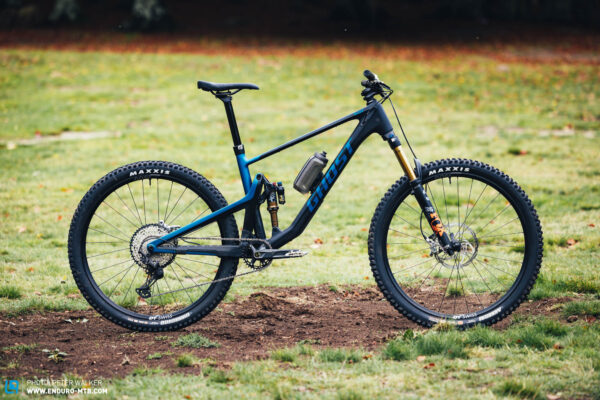
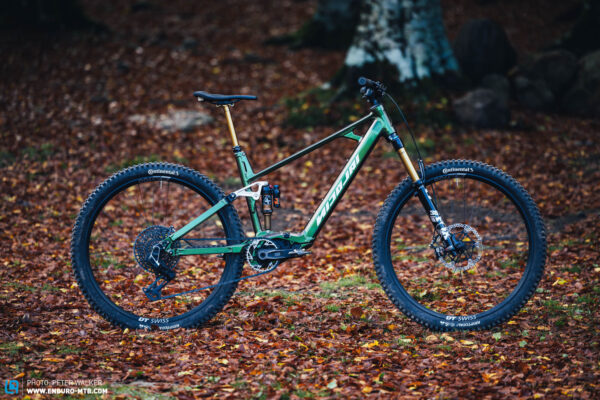
Unconventional looks meet an unconventional riding experience! The NICOLAI SATURN 14 Swift HRZ 2023 is exotic in all respects, in terms of handling, manufacturing process and aesthetics. The combination of finely machined parts, alloy tubes and coarse weld seams sets it apart from the crowd. However, the riding behaviour is rather exceptional too, requiring a great deal of effort to get used to the peculiar handling. This costs the SATURN precious points and pushes it right back to the bottom of the test field.
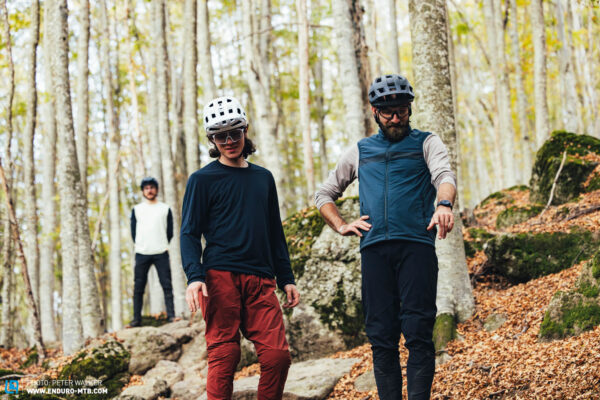
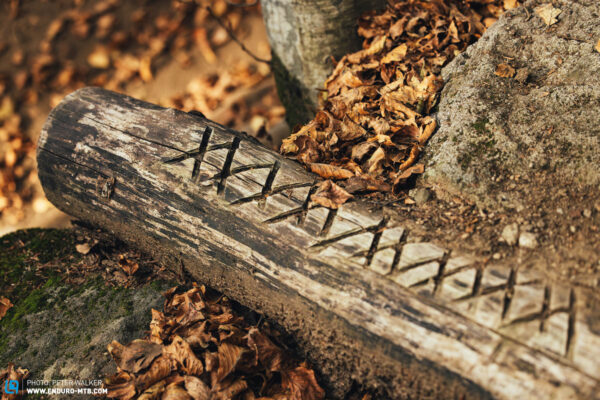

More exciting trail bike recommendations from our 2024 group test
The Specialized S-Works Turbo Levo SL emerges as the best light e-mountainbike in our 2024 trail bike group test, and only misses out on the Best in Test title by a hair’s breadth. The Levo SL is the perfect choice for riders who can’t do without motor assistance, but also want balanced, smooth-performing suspension – by far the most impressive in this test! Specialized rely on their extraordinary ebike know-how to deliver a belter of a bike with a top tier spec and some clever detail solutions that burst with confidence – and rightly so, because it’s amongst the best performing bikes in the entire test field.
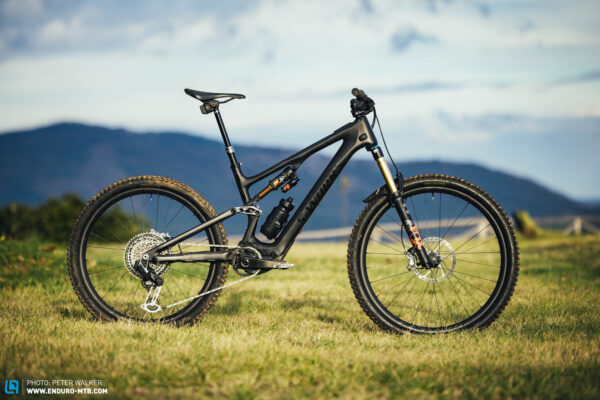
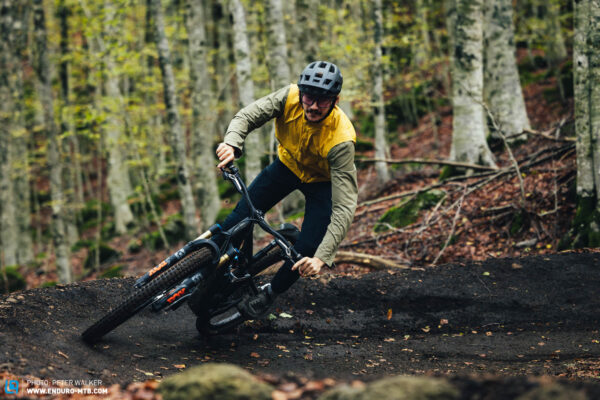
The Cannondale Habit LT 1 takes on whatever you throw at it. The price-friendly spec is cleverly chosen and perfectly matches the bike’s potential and range of applications – save for a few minor upgrades. The Habit LT 1 delivers an excellent performance on the trail, impressing above all with its well-tuned rear suspension. The intuitive handling strikes a good balance between composure and agility, ensuring lots of fun on the trail without reaching its limits on demanding trails.
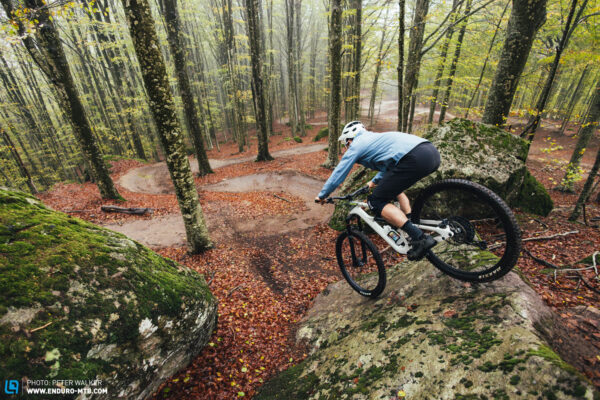
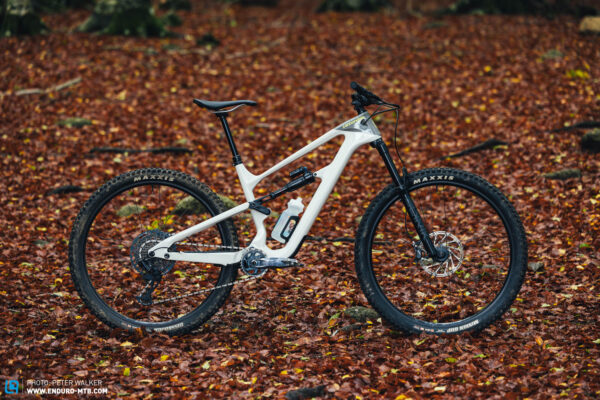
While the Santa Cruz Hightower X0 AXS RSV 2023 might not look spectacular on paper, it comes with a few clever, well-implemented features, like the Glovebox storage compartment in the down tube. On the trail, the Hightower is a strong all-rounder and a real joy to ride, and significantly more capable than many of the other trail bikes in this test. It might not be the ideal bike to get rowdy, but makes up for this with very agile, fun handling, ranking alongside the best bikes in this group test.
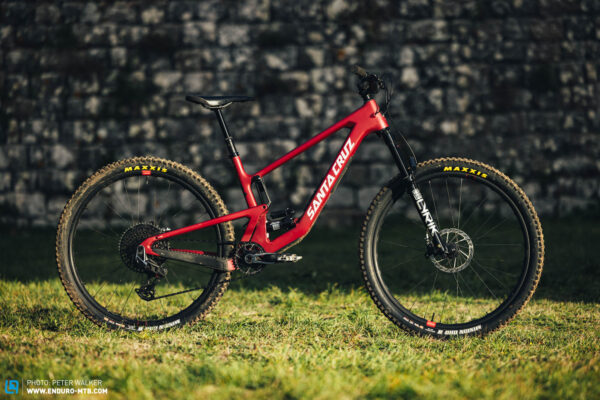

The YETI SB140 LR T3 X0 proved an excellent trail bike all-rounder that lives up to its “one bike for everything” claim. Despite the lack of a storage compartment and tool mount, it features many functional, well thought-out frame details. The SB140 LR delivers an impressive performance on the trail and only misses out on the test victory by a hair’s breadth. Simply put, it’s a mean cornering machine with ridiculously good suspension, regardless of the type of trail.


The Orbea Occam LT M10 is built around a clever, versatile frame platform that allows you to customise the spec and look of your bike using Orbea’s extensive MyO configurator. With its comfortable pedalling position and pedal-neutral suspension, the Occam is an excellent climber and, as soon as you point its nose into the valley, it delivers the finest downhill performance in the entire test field, impressing with predictable, confidence-inspiring handling – though this comes at the expense of agility. Overall, the Occam is an outstanding trail bike with its foot in the enduro door, and the optimal choice if you’re looking for a versatile trail rocket.

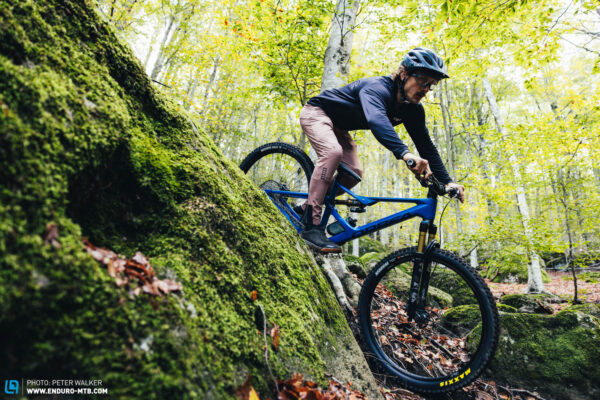
You will find the biggest surprises and most important findings from our 2022 trail bike test as well as an outlook on the future of trail bikes in this separate article.
Are trail bikes not capable enough for you, or are you looking for a more relaxed bike for moderate trails?
Then you should take a look at our other recent comparison tests:
- The best enduro bike
- The best downcountry bike
- The best light e-mountainbike
- The best bike park bike
- North America’s Finest Bikes
Did you enjoy this article? If so, we would be stoked if you decide to support us with a monthly contribution. By becoming a supporter of ENDURO, you will help secure a sustainable future for high-quality mountain bike journalism. Click here to learn more.
Words & Photos: Peter Walker




